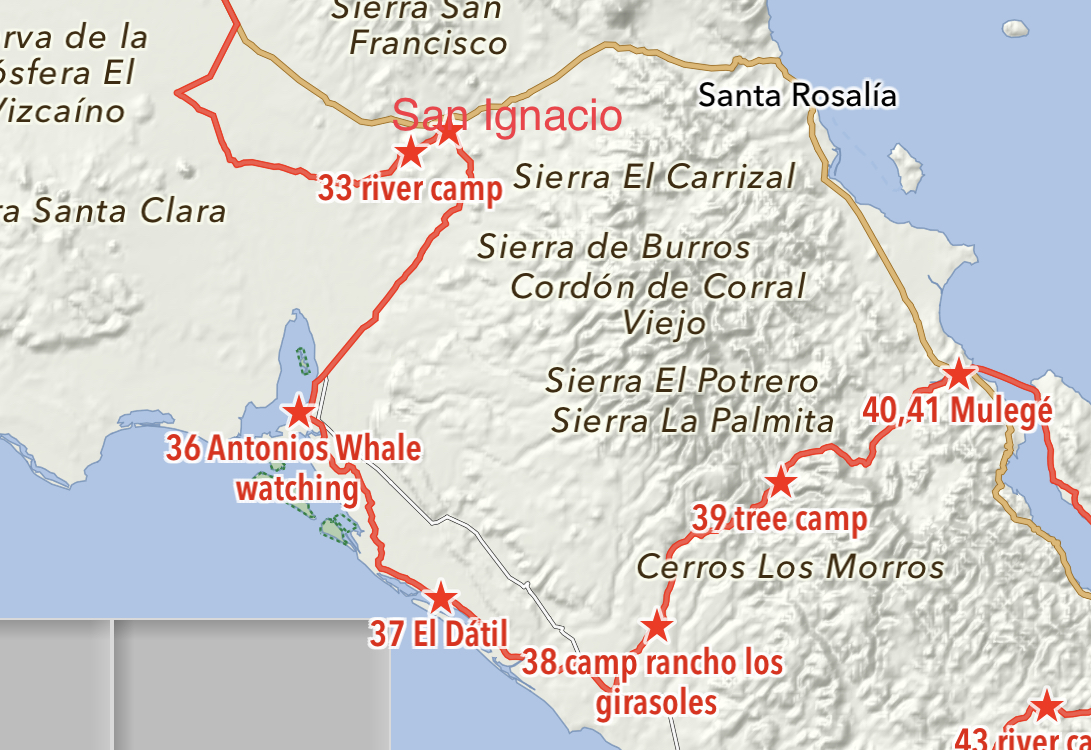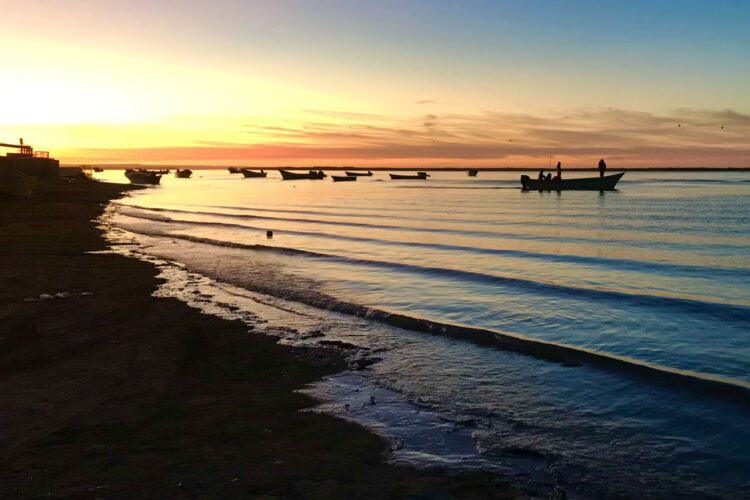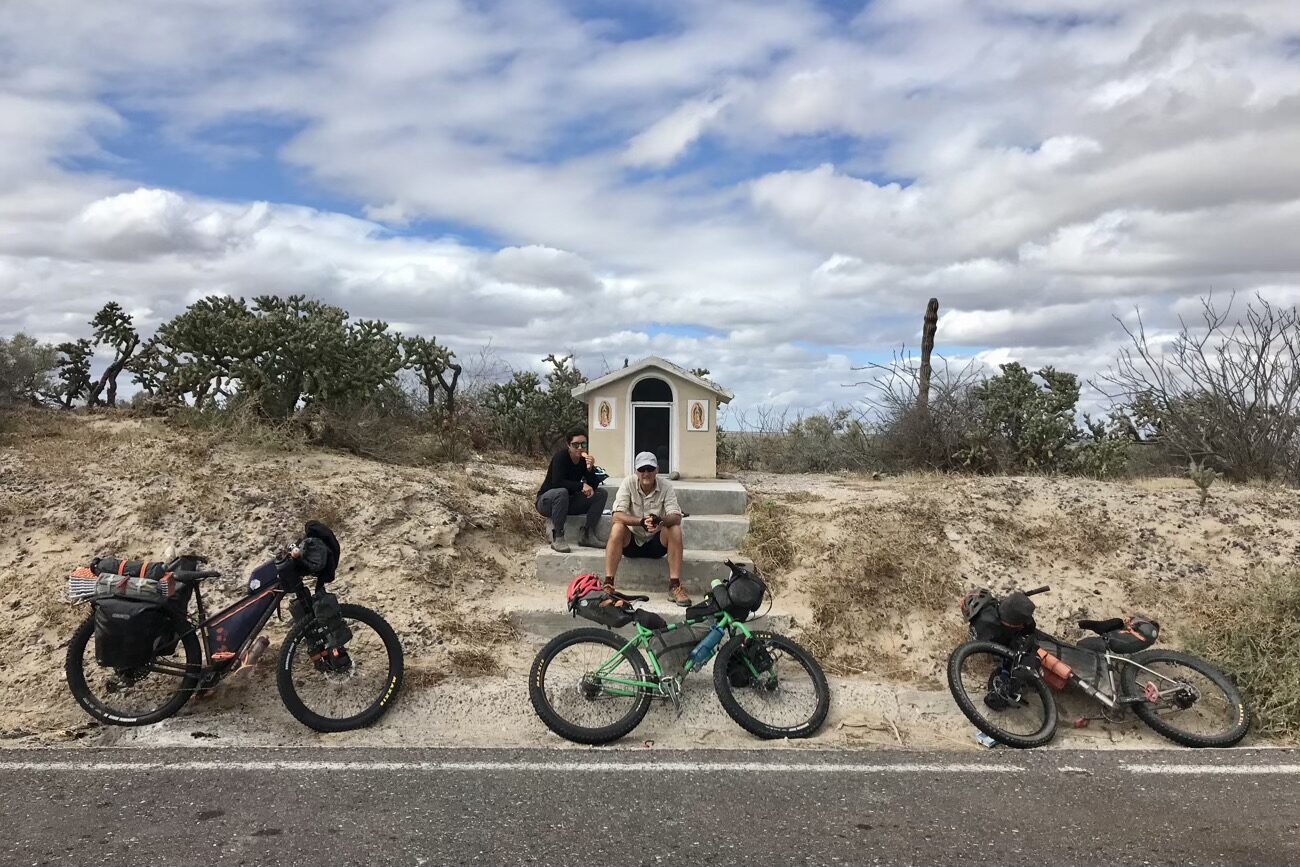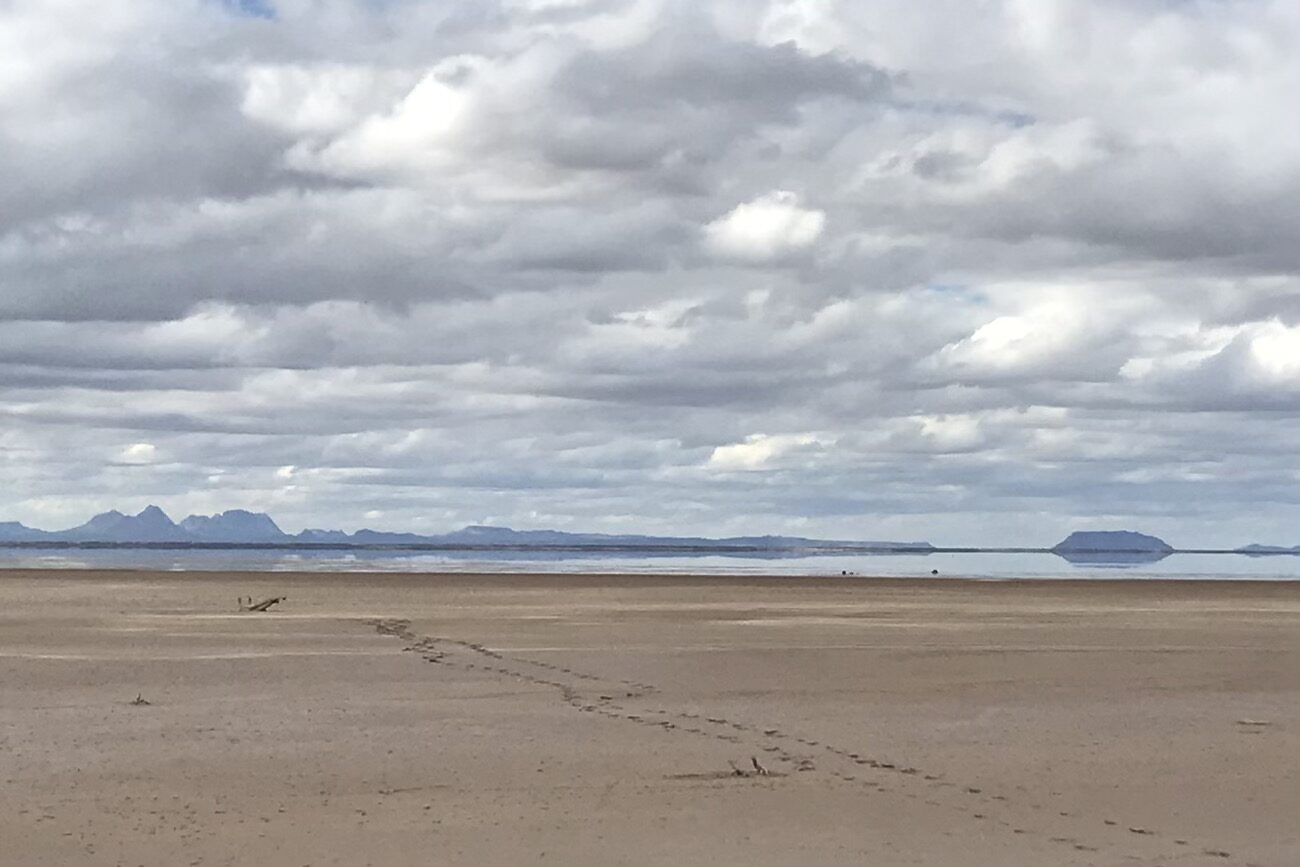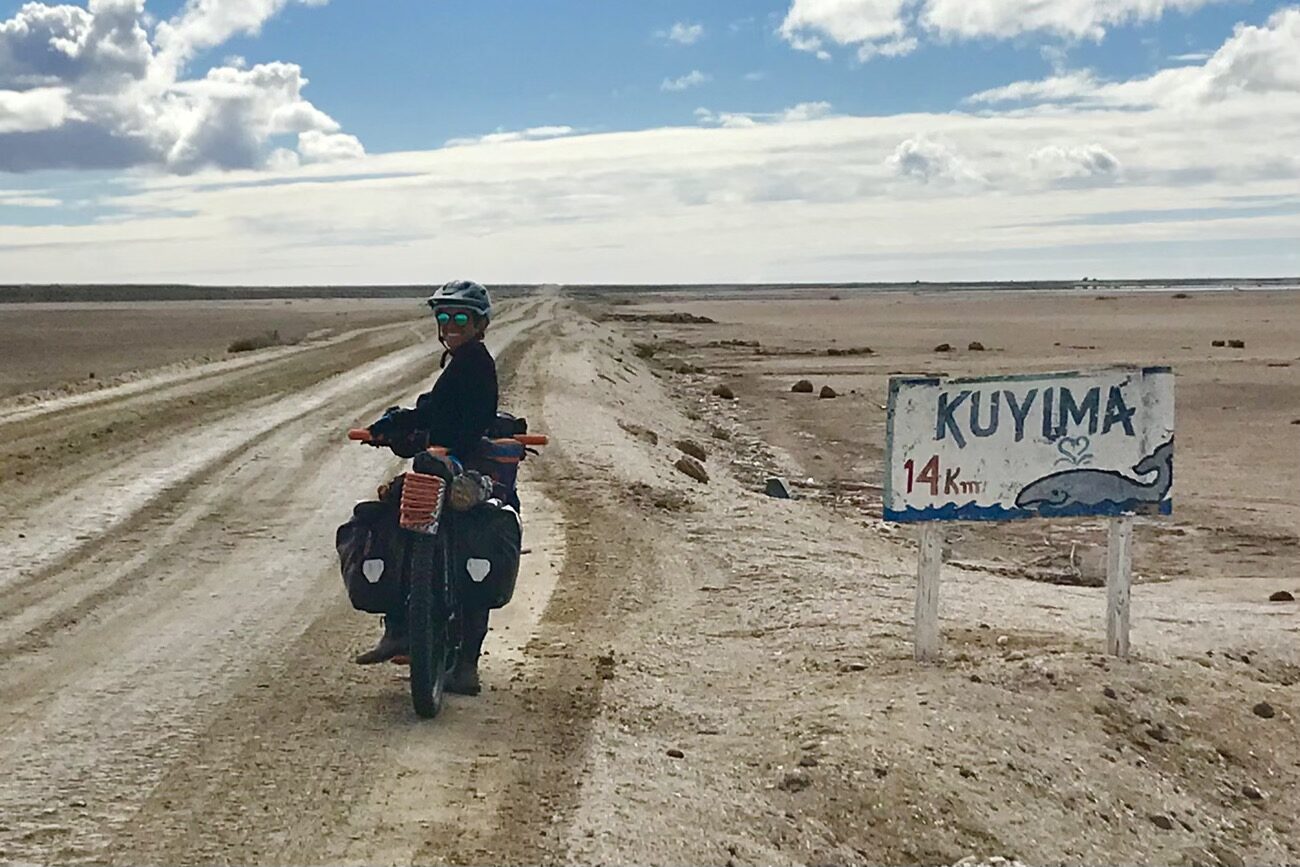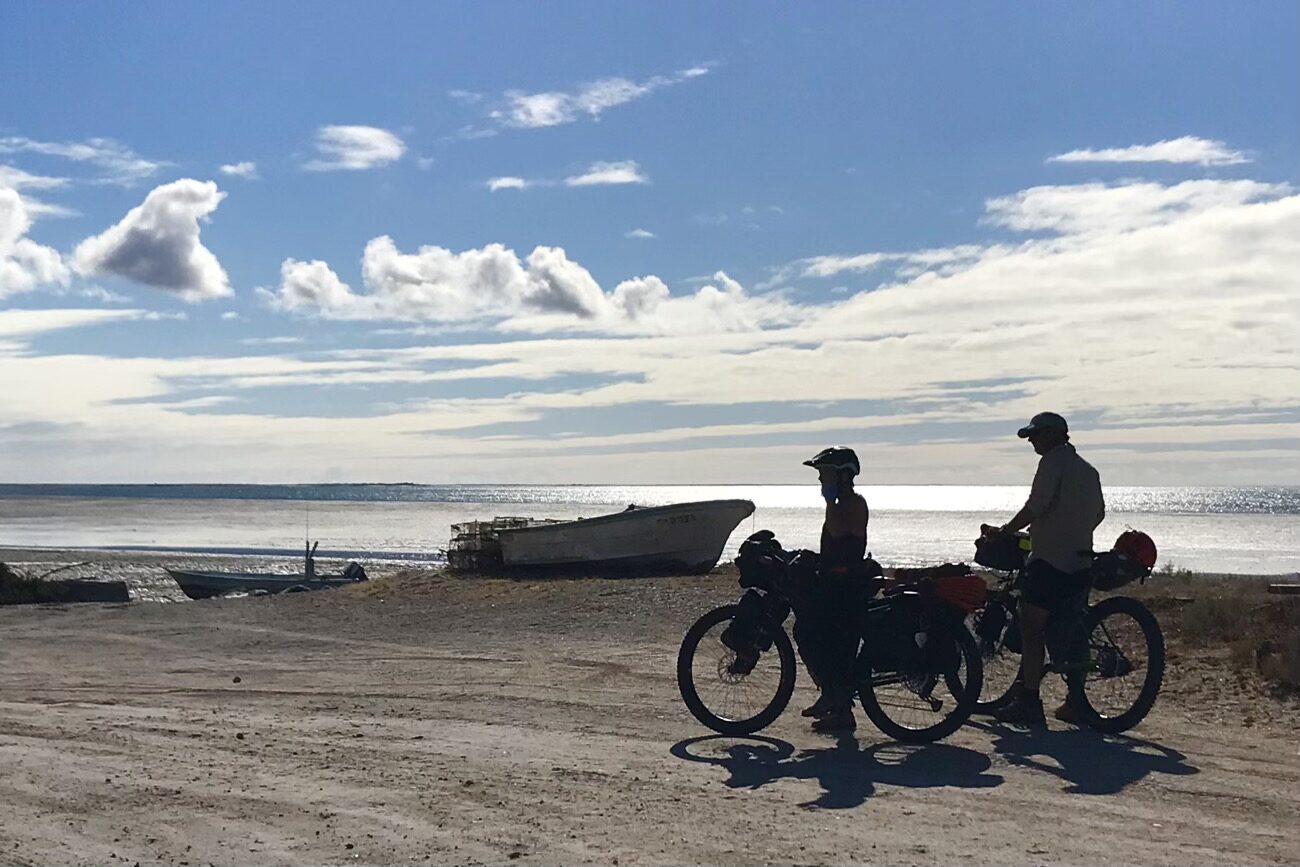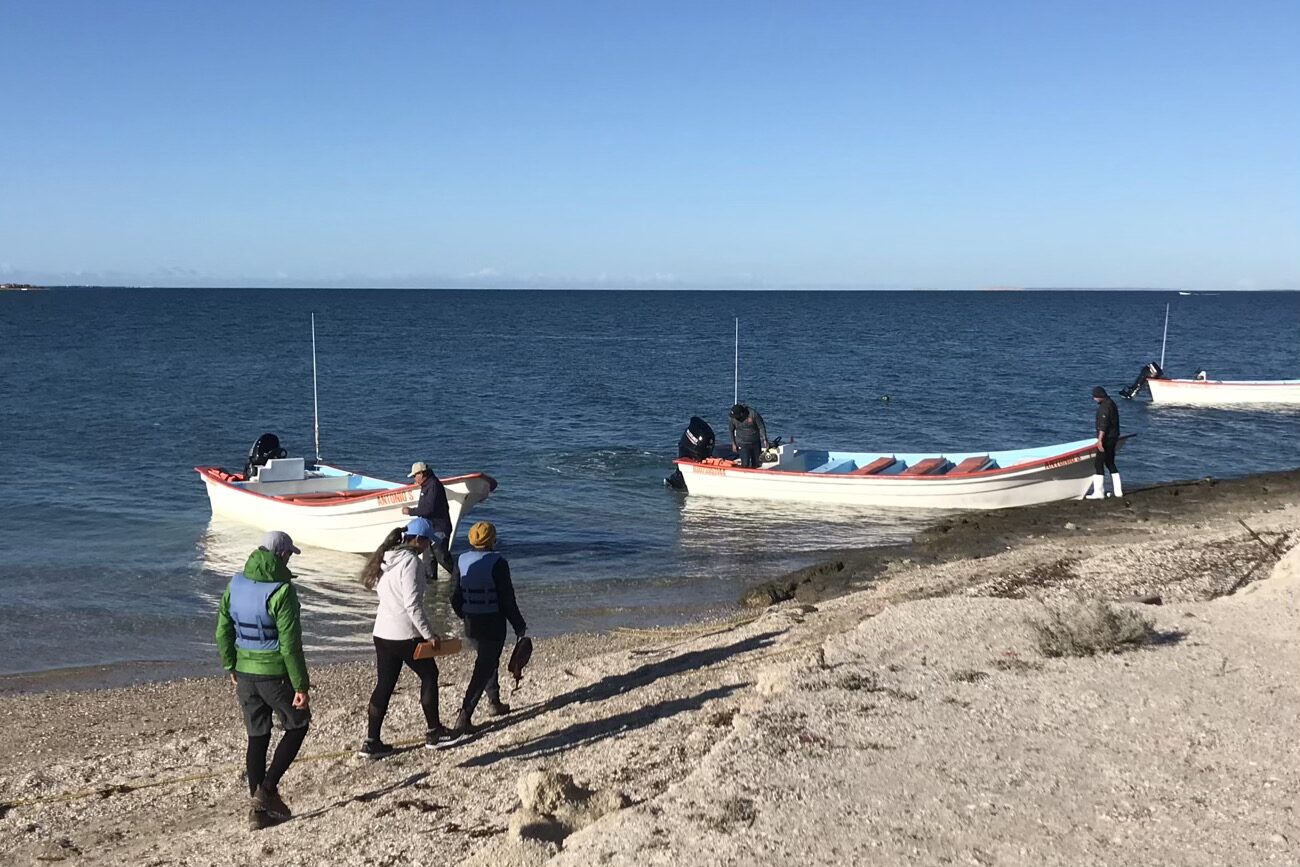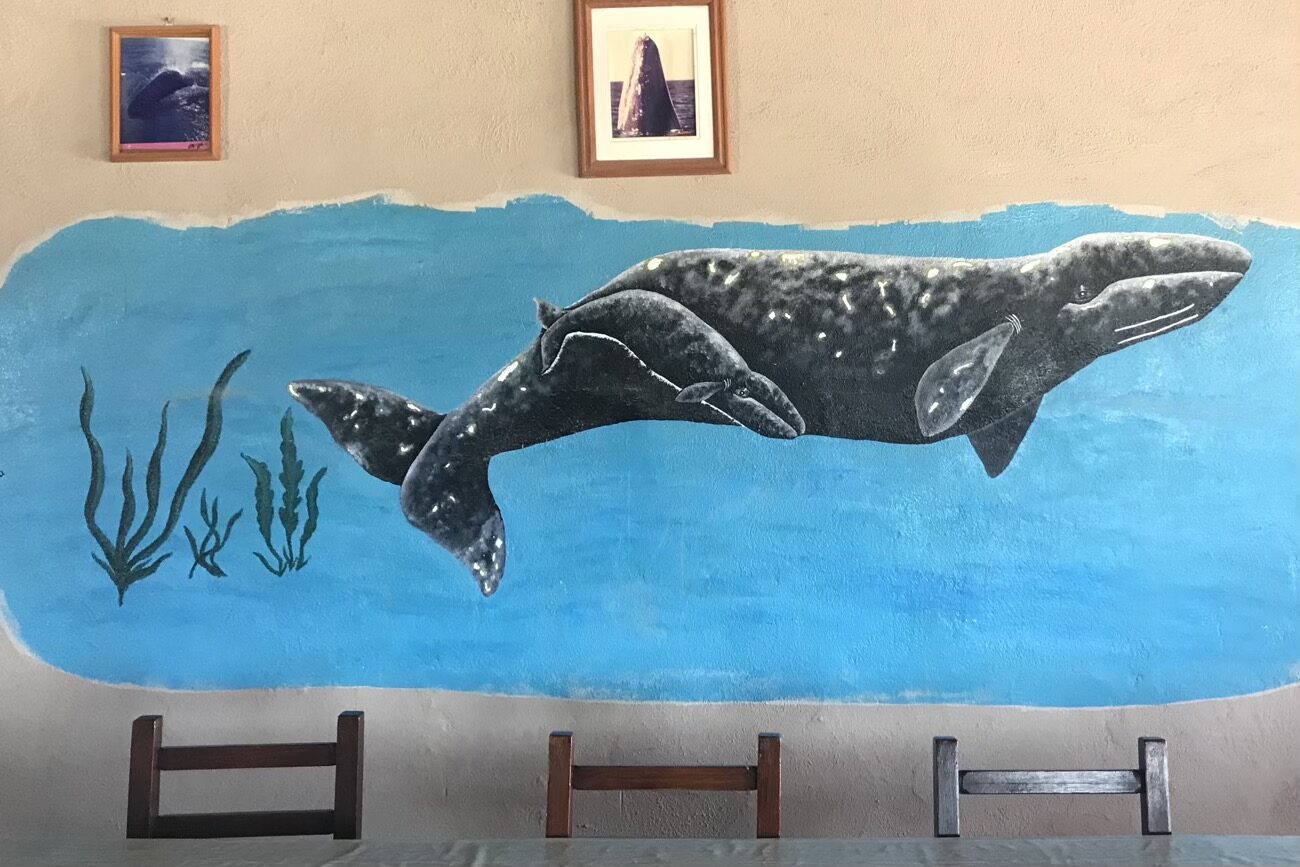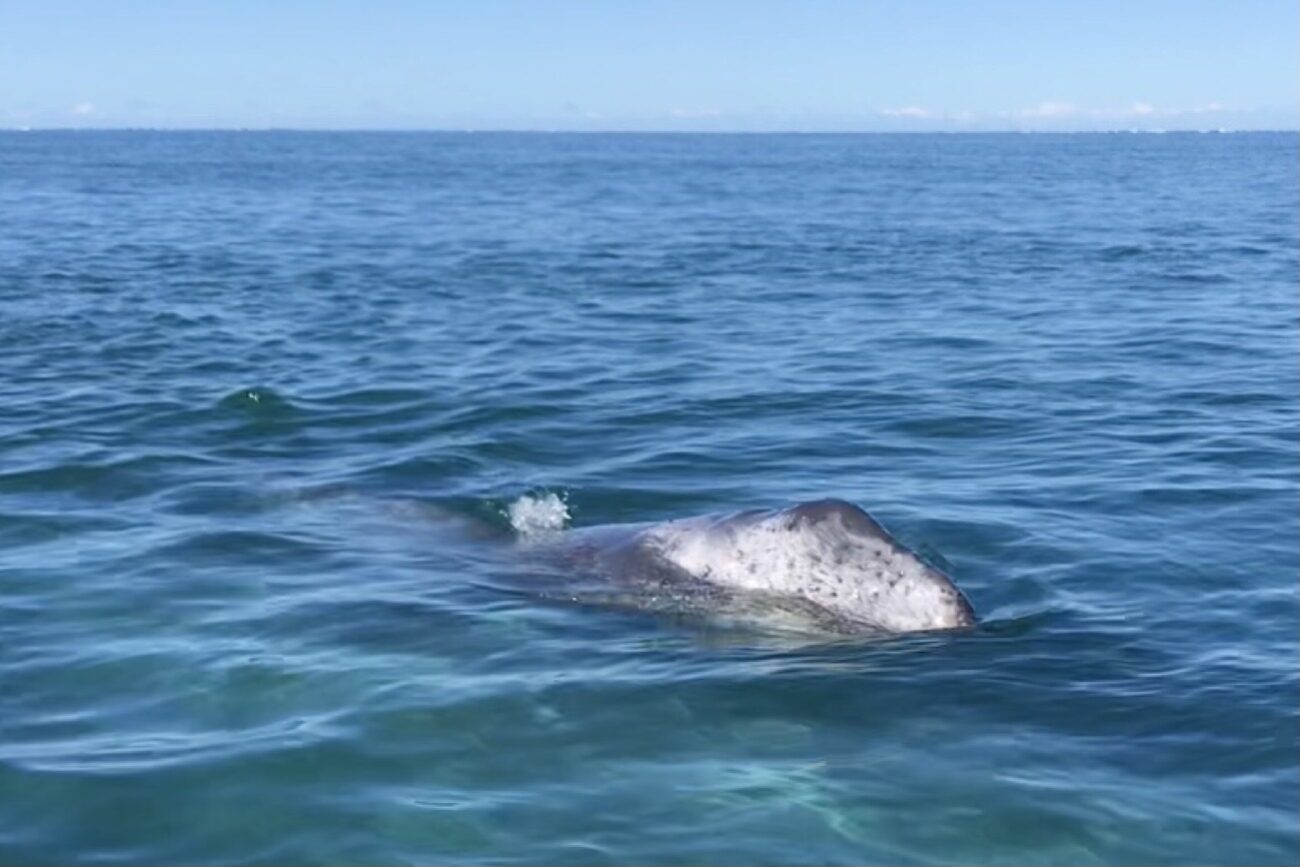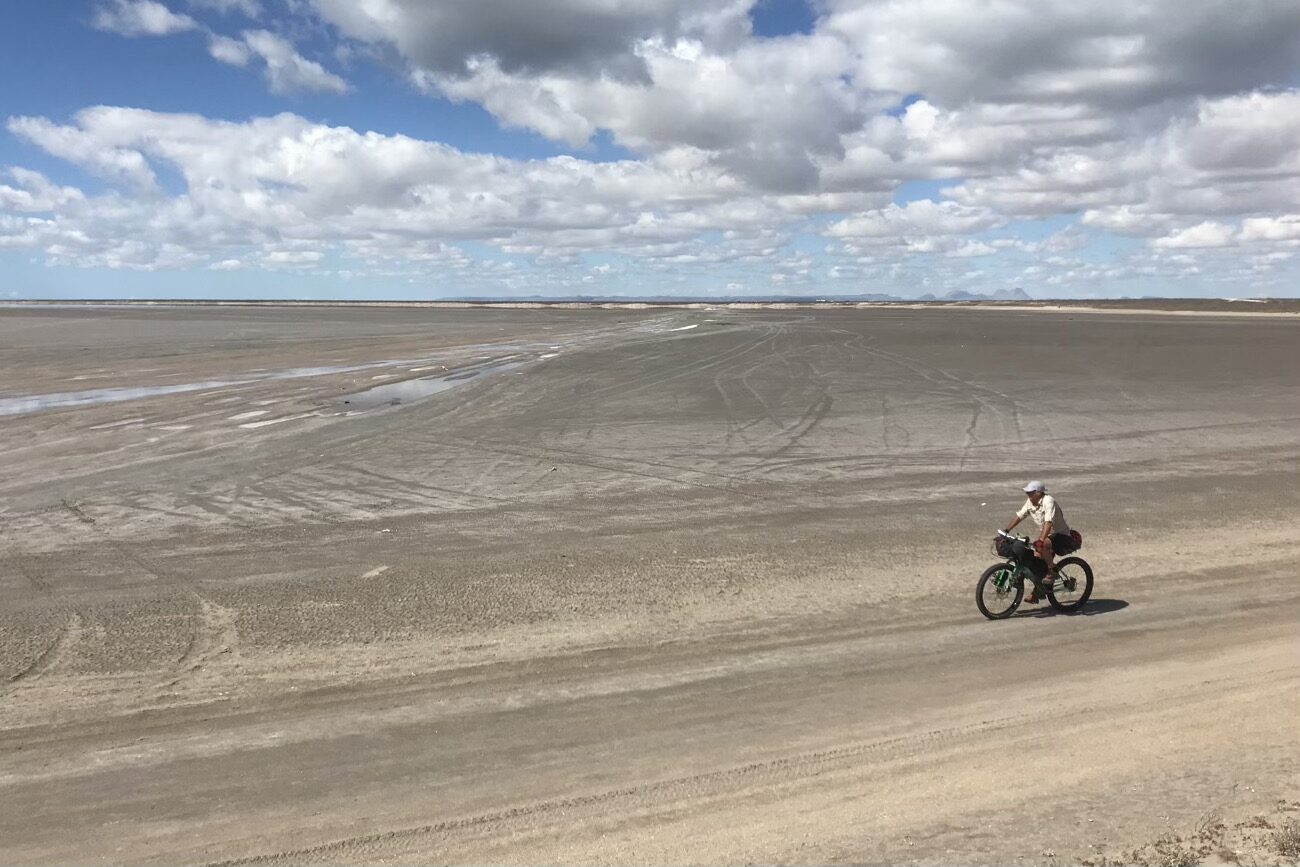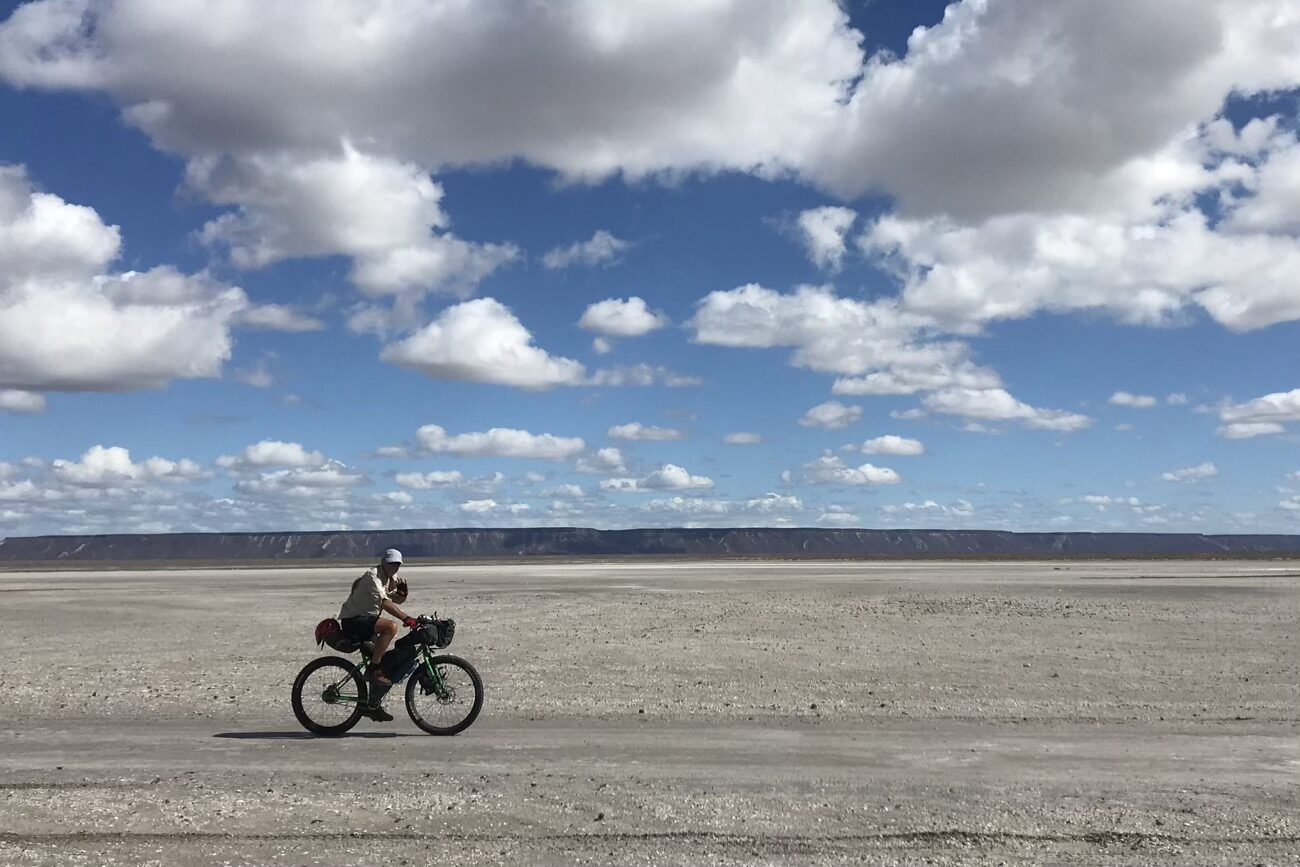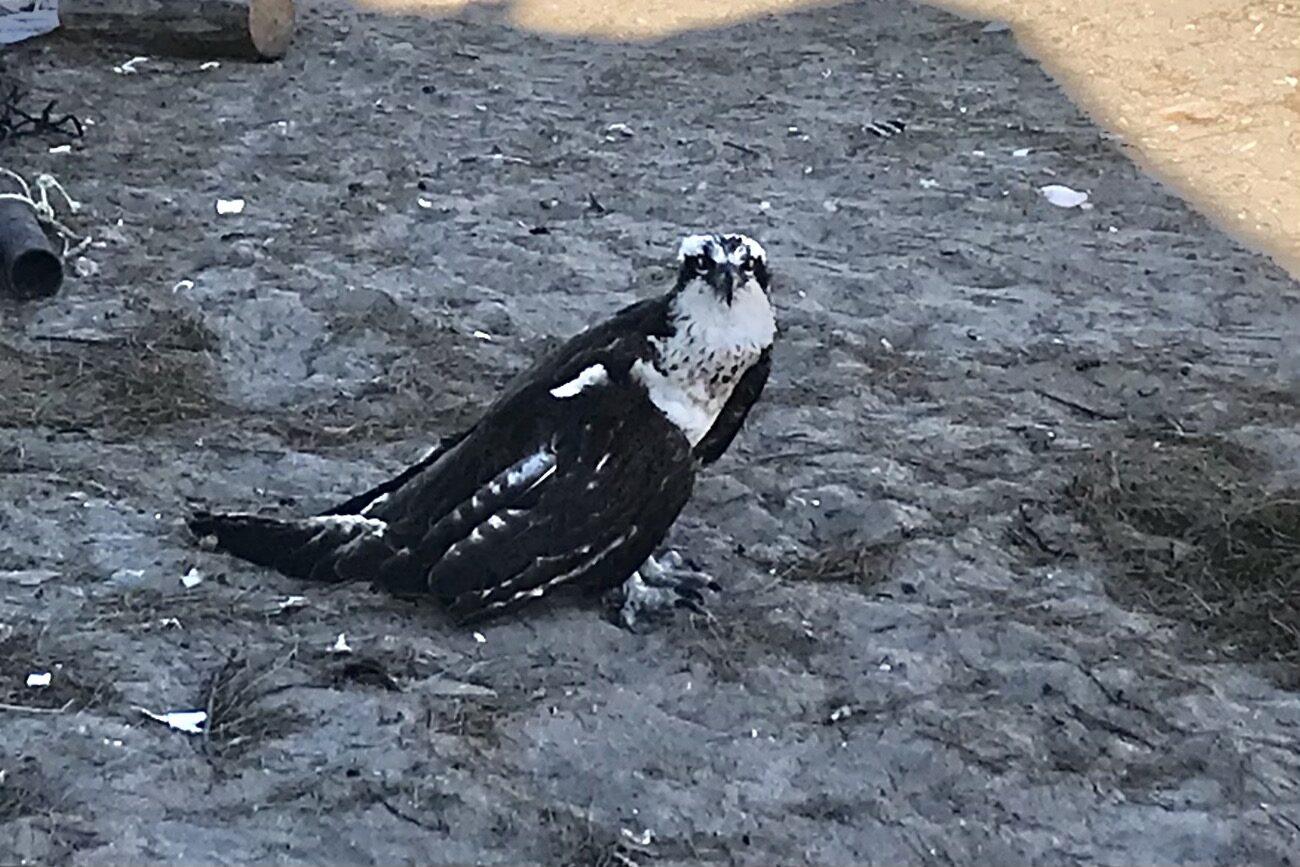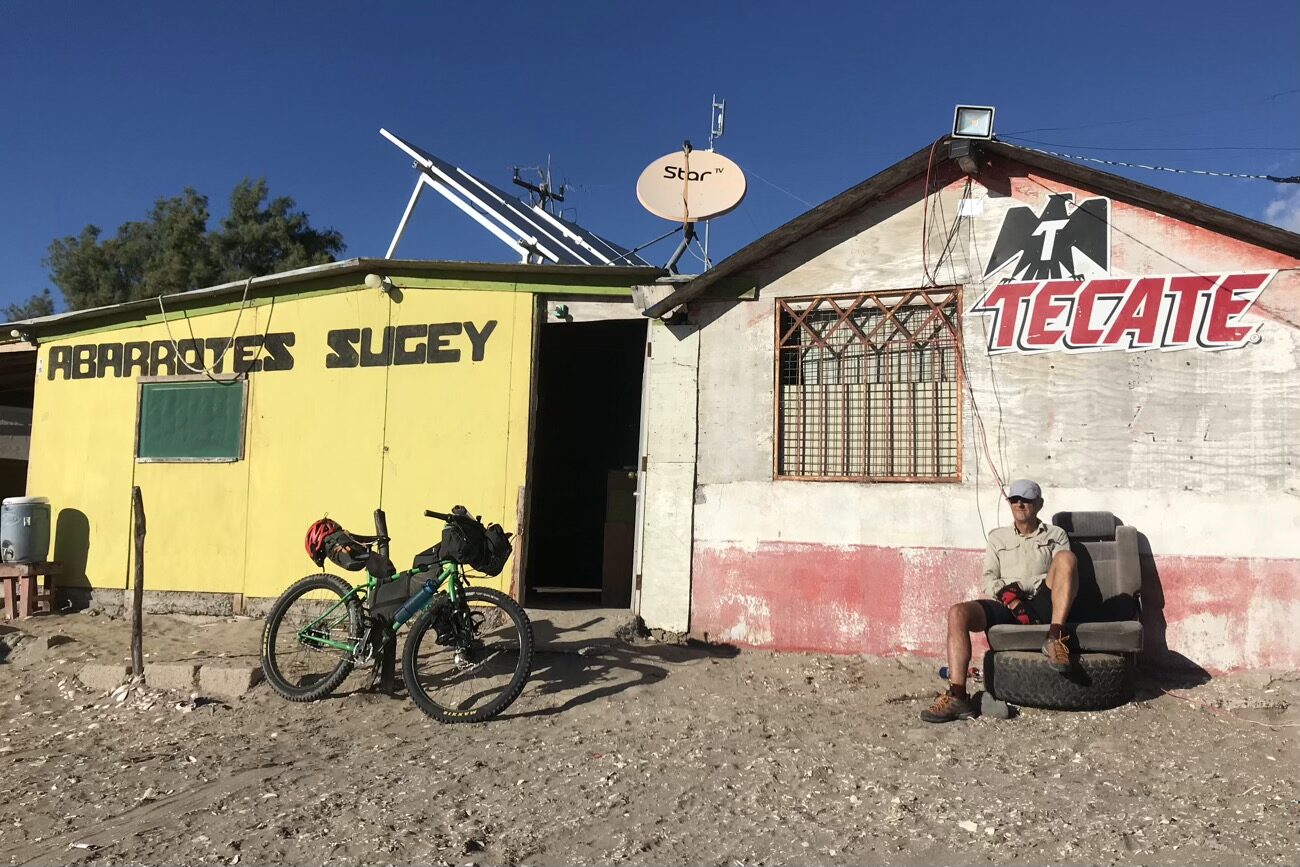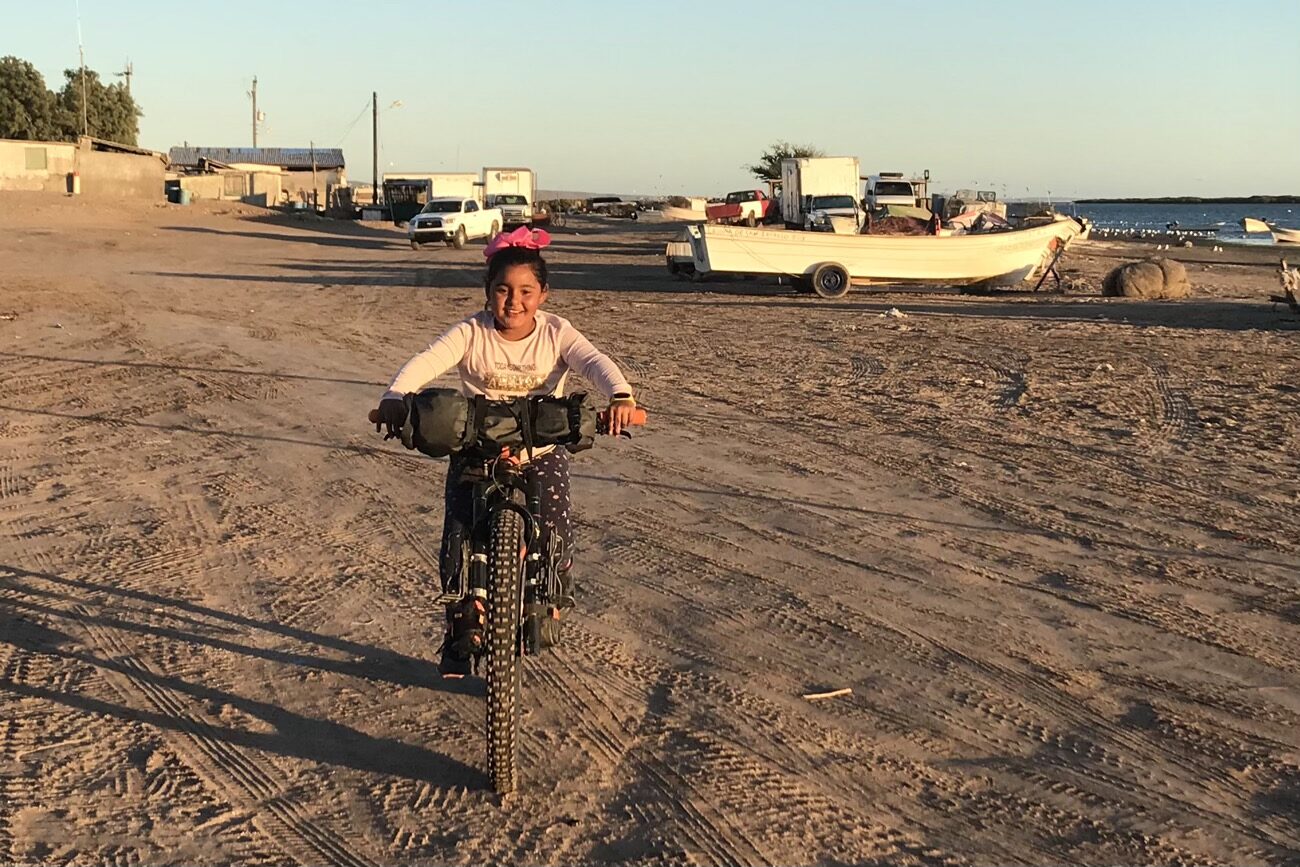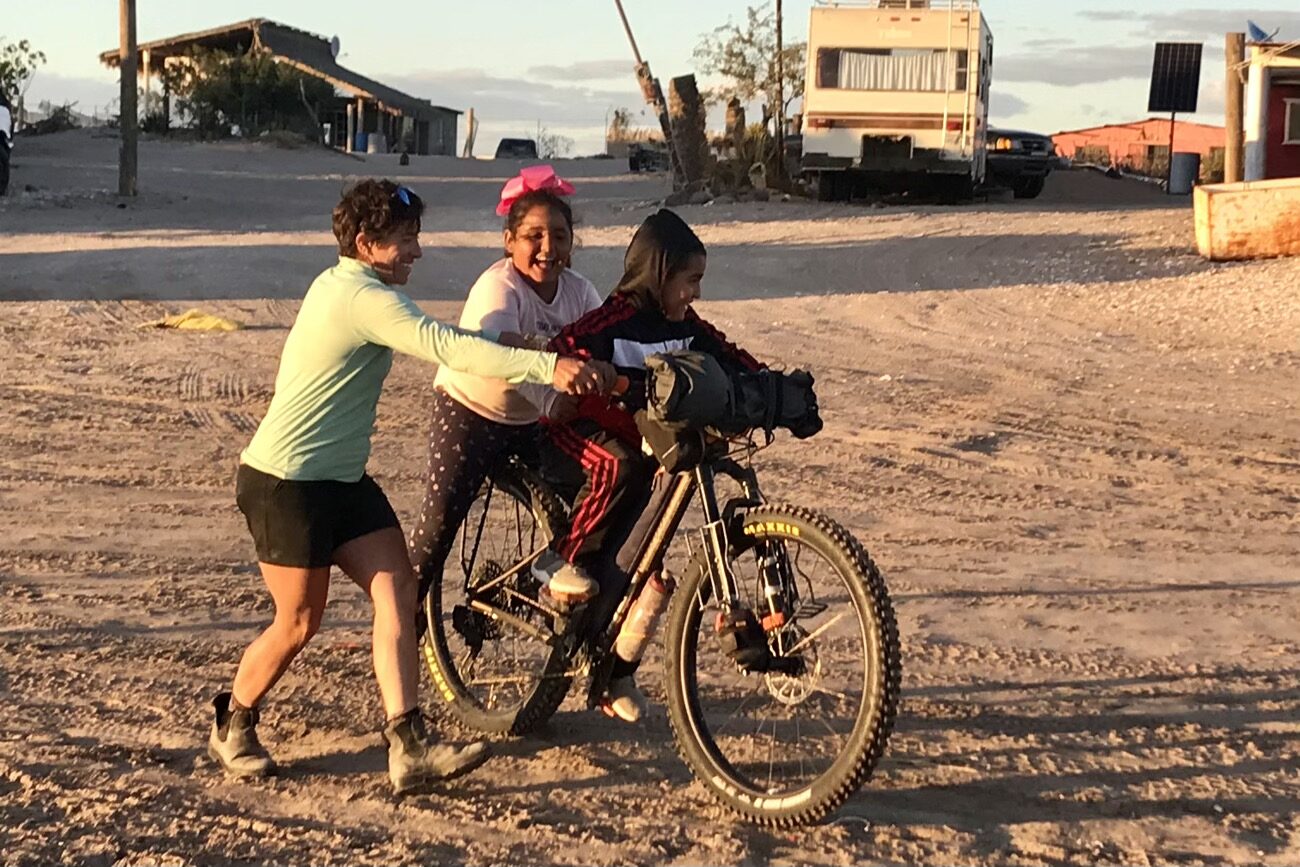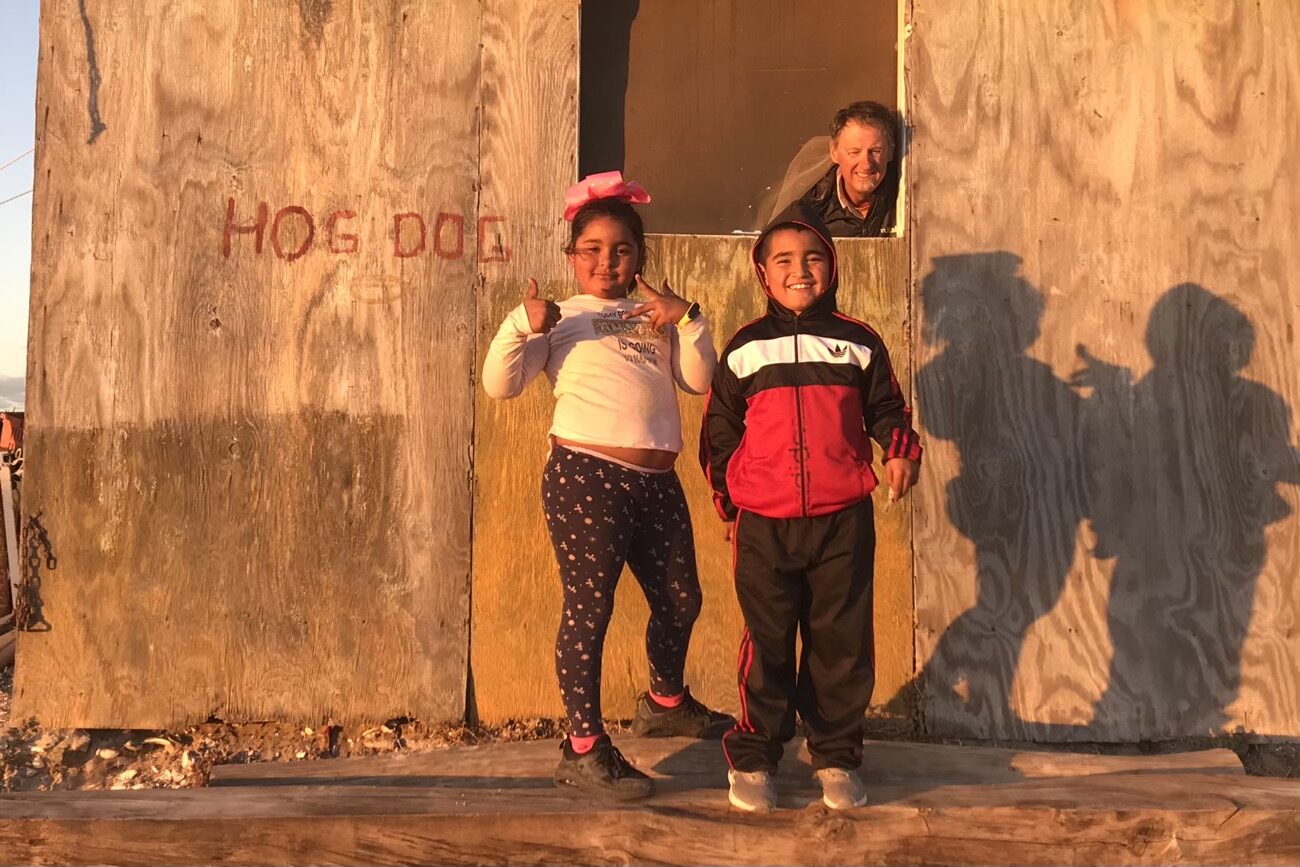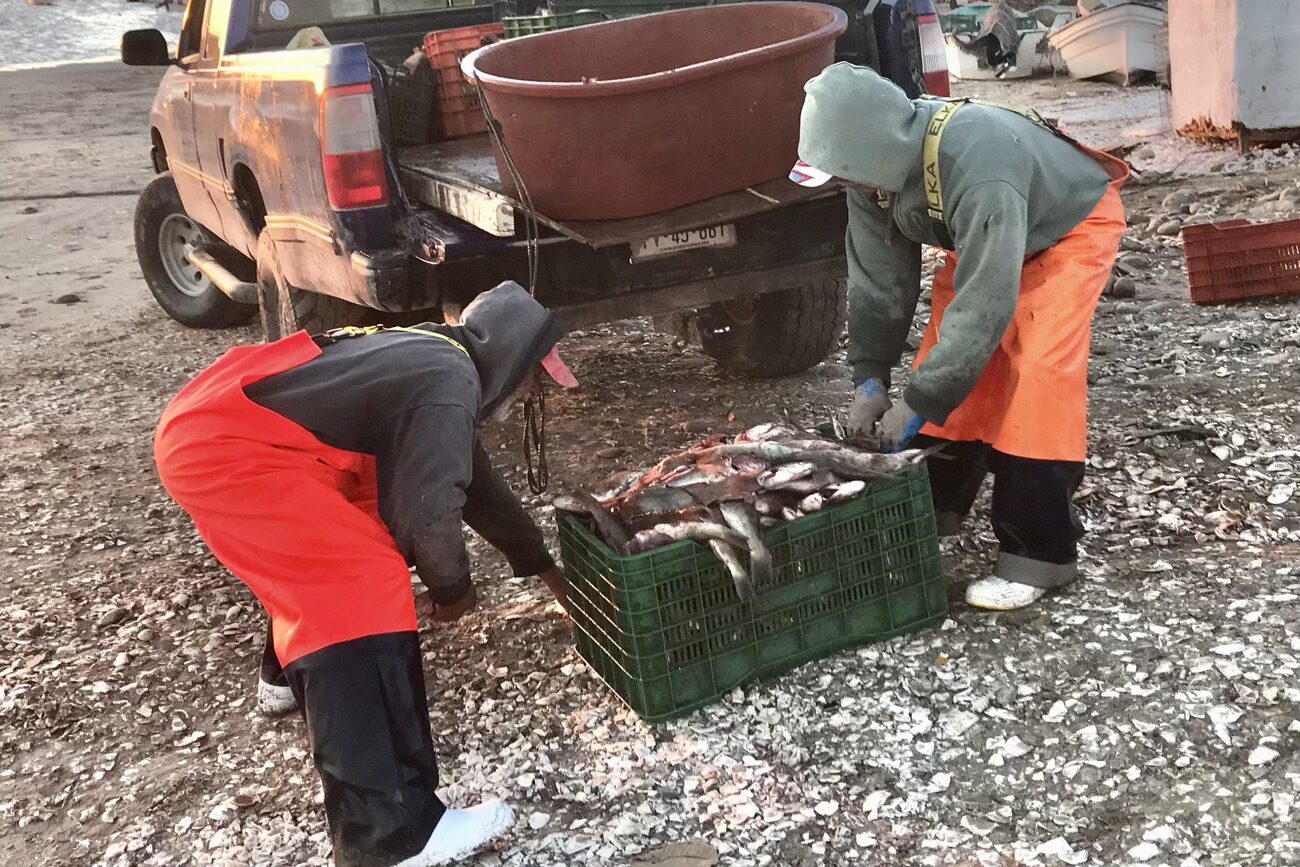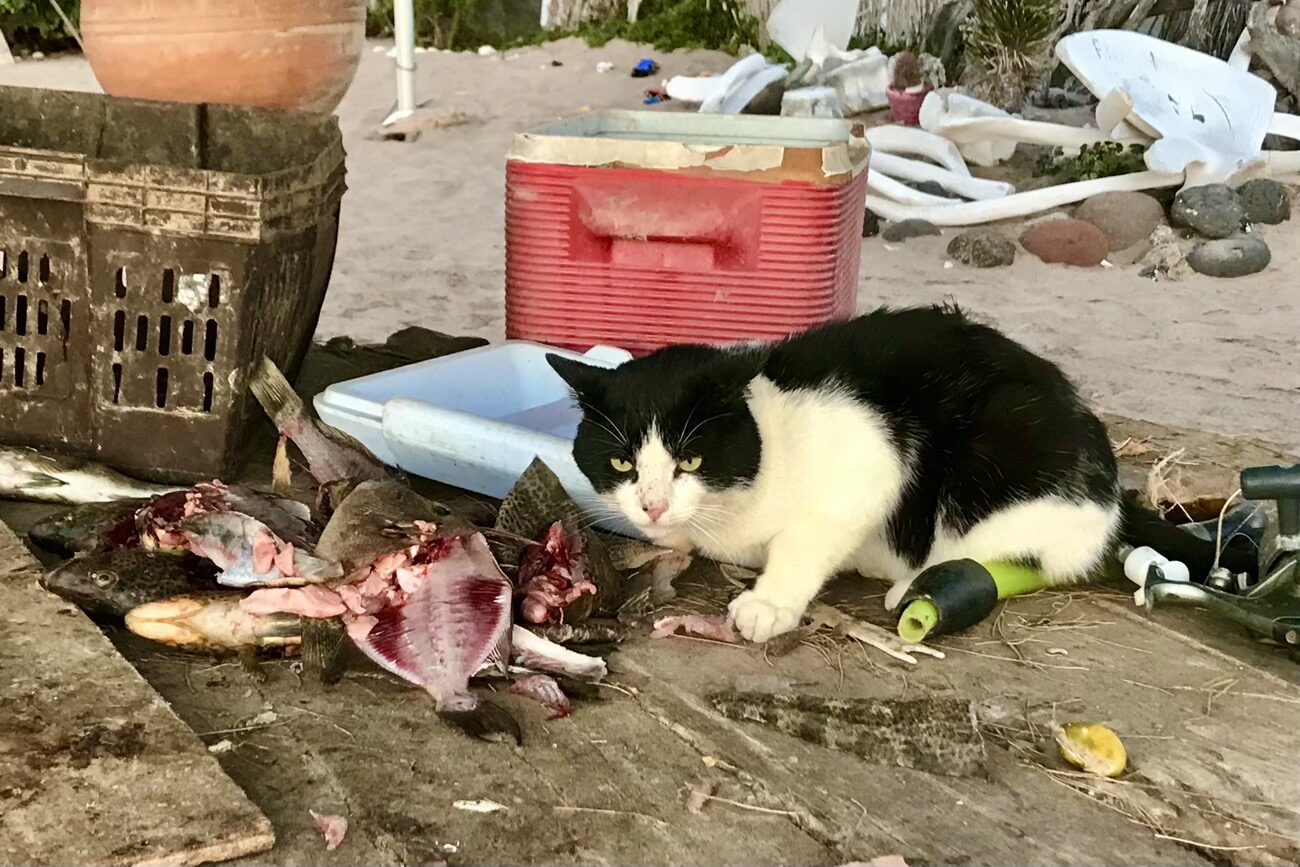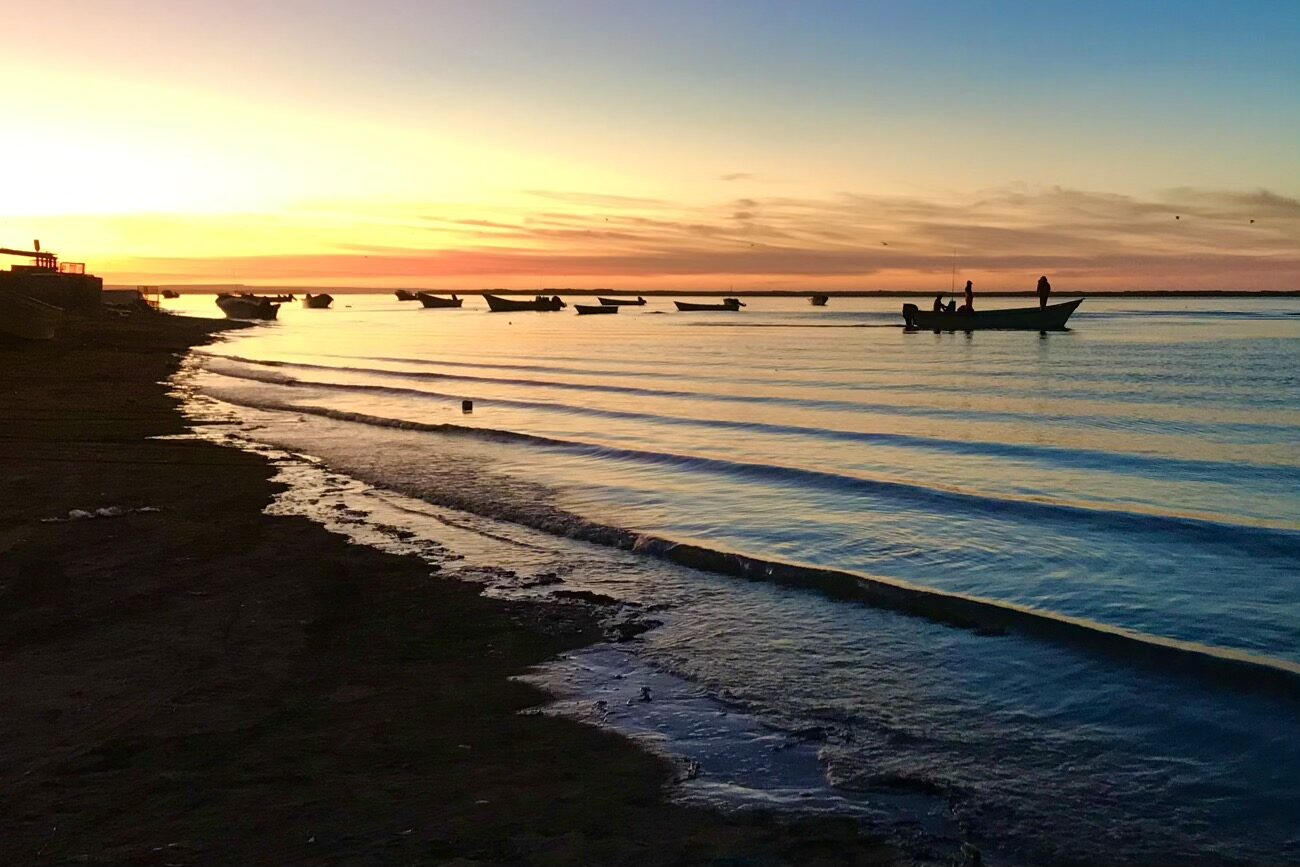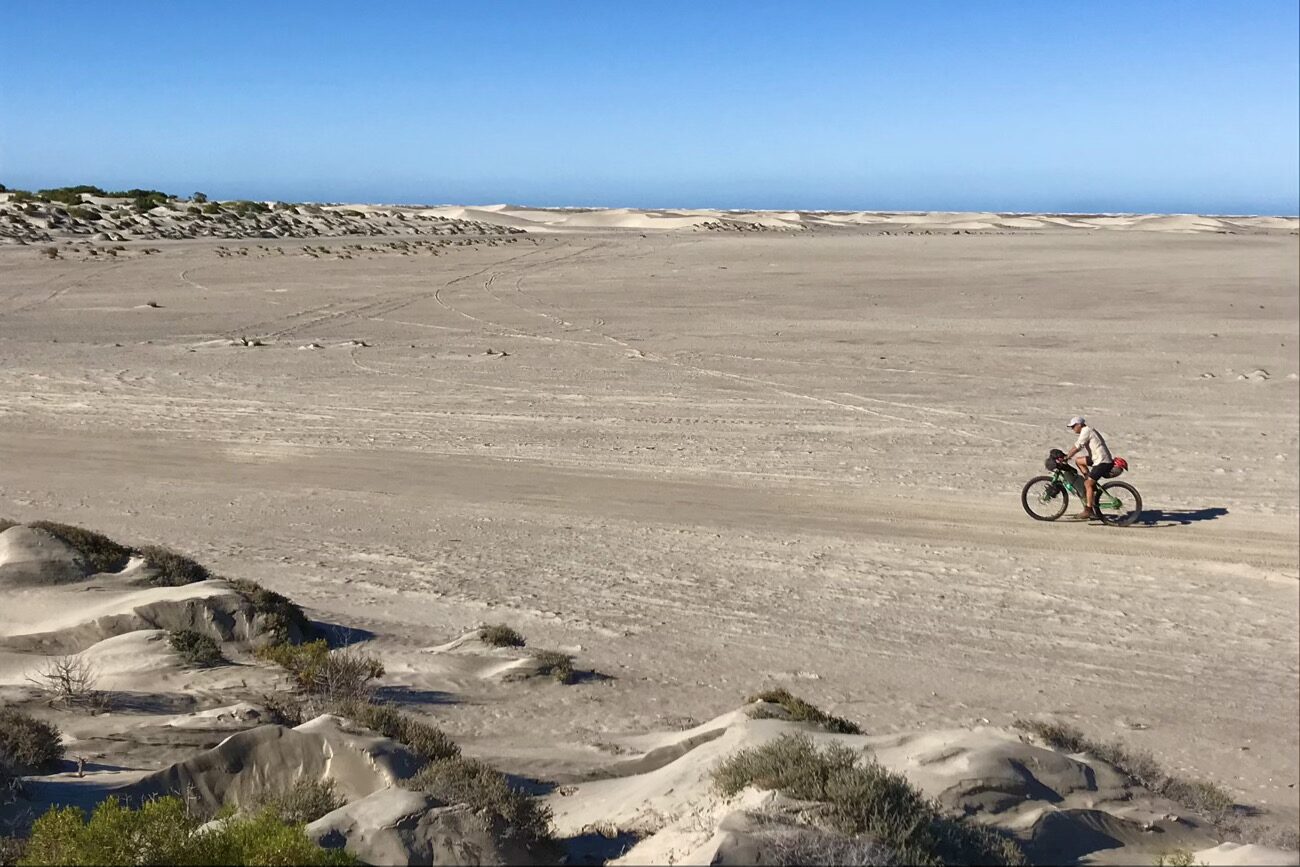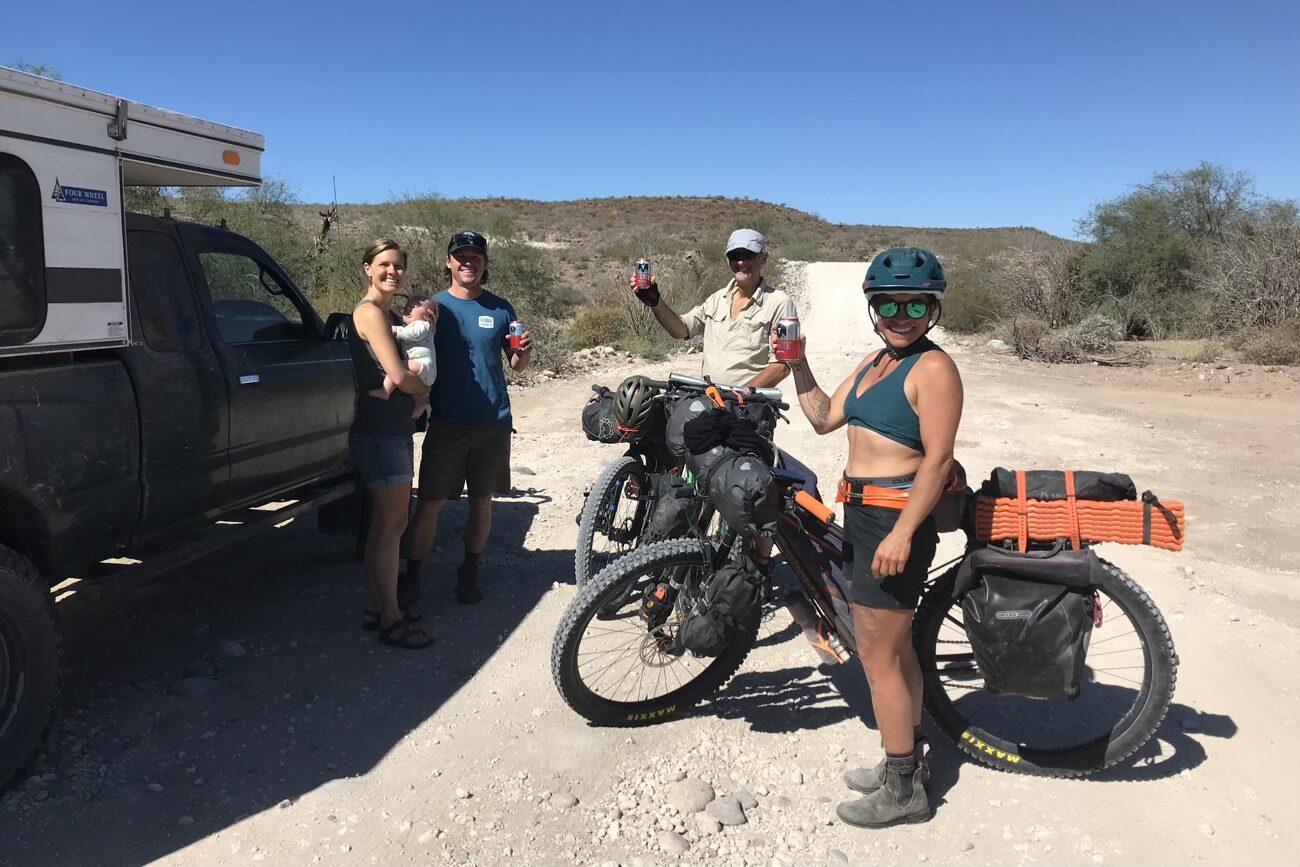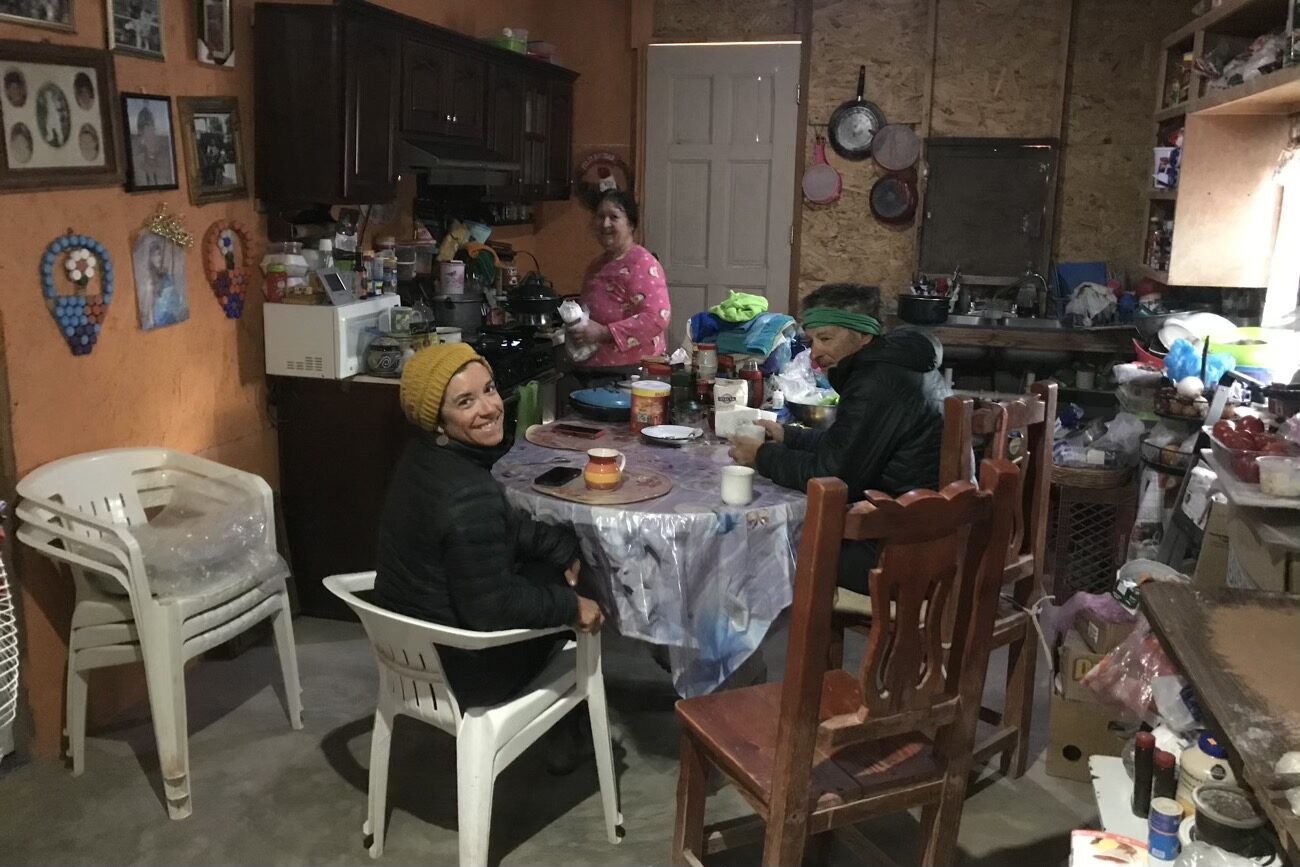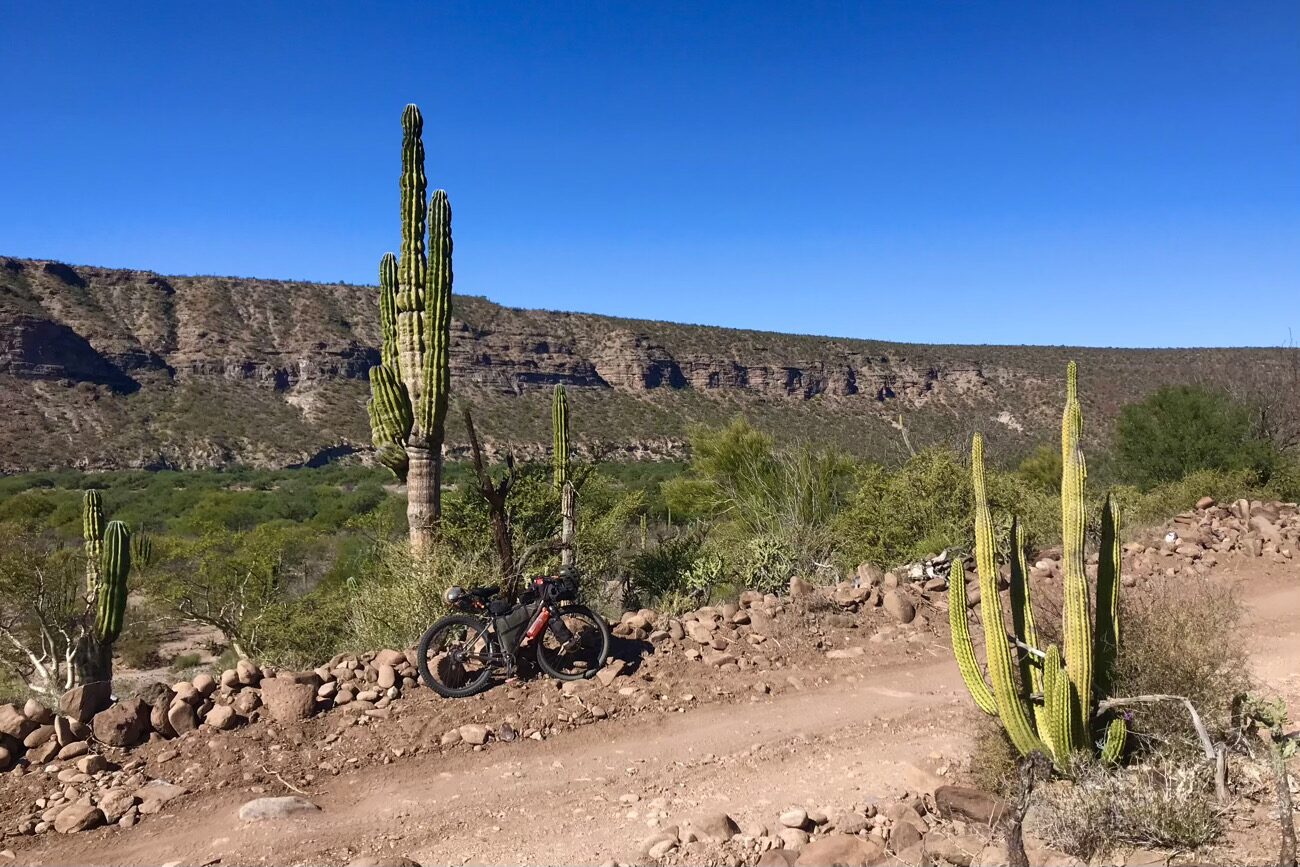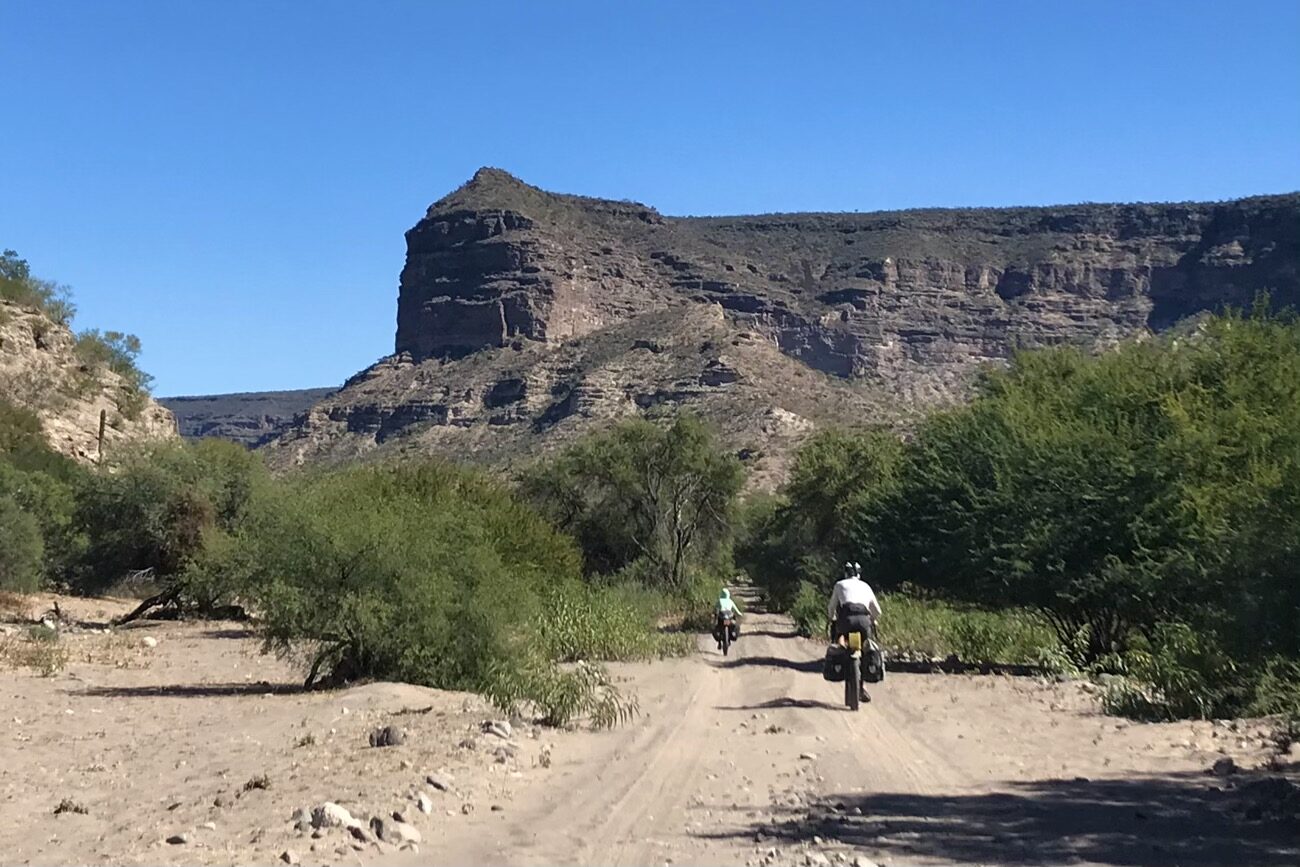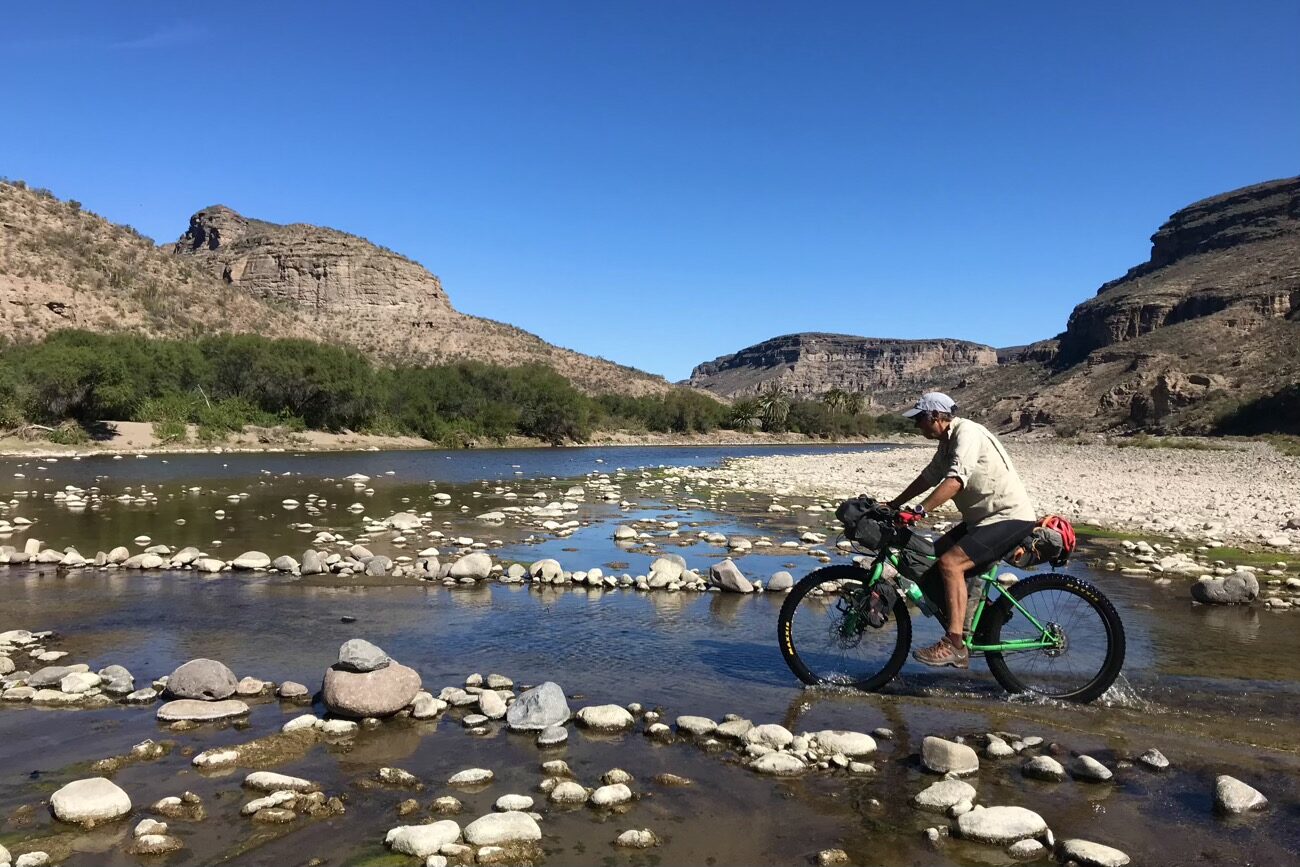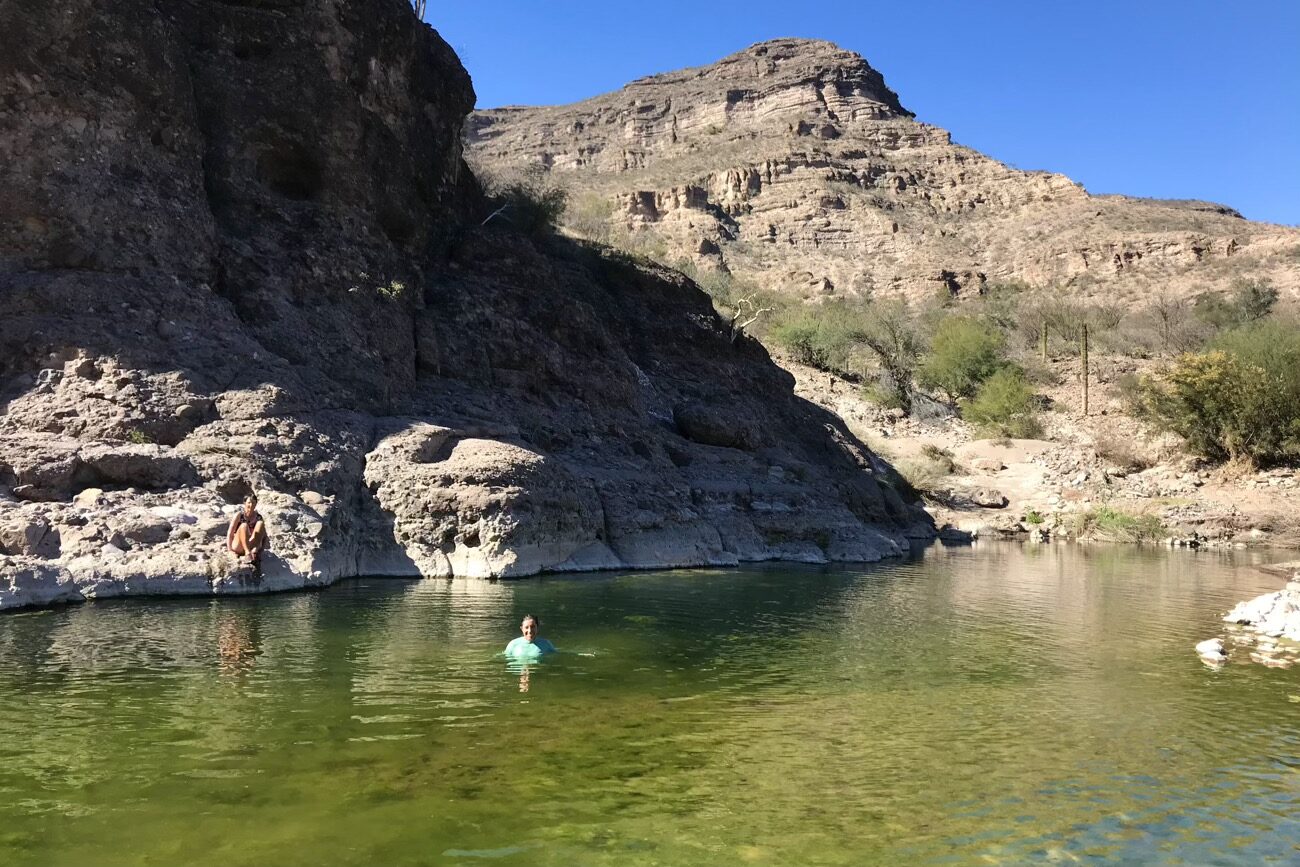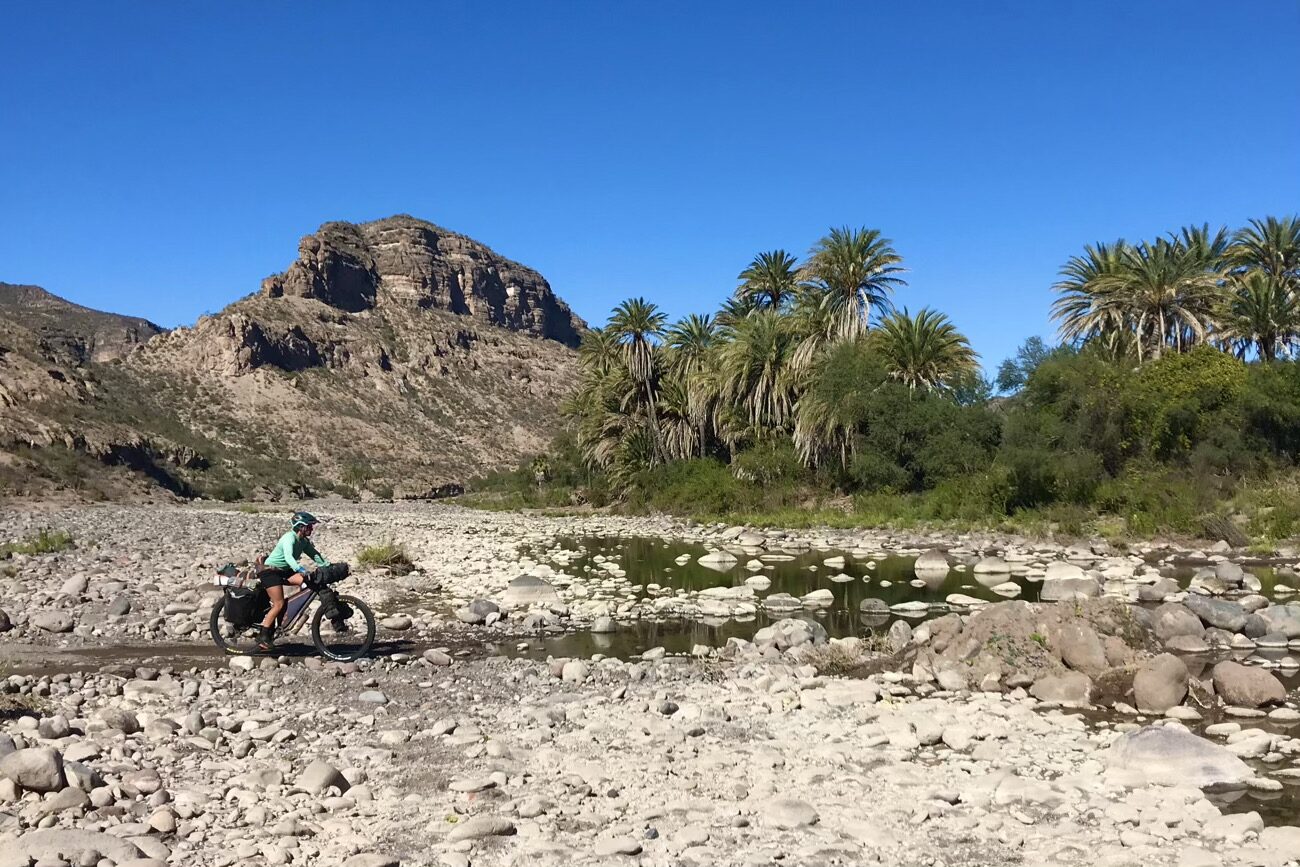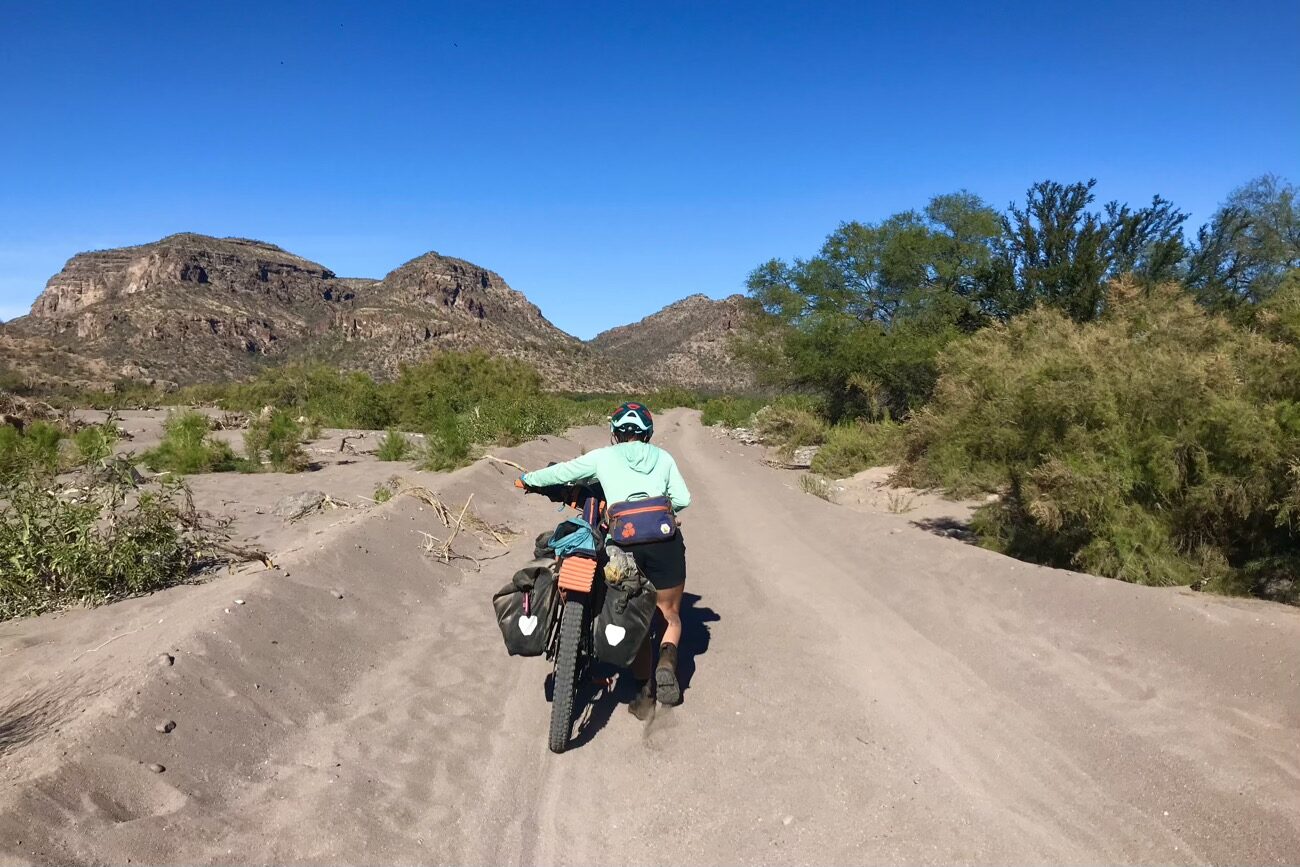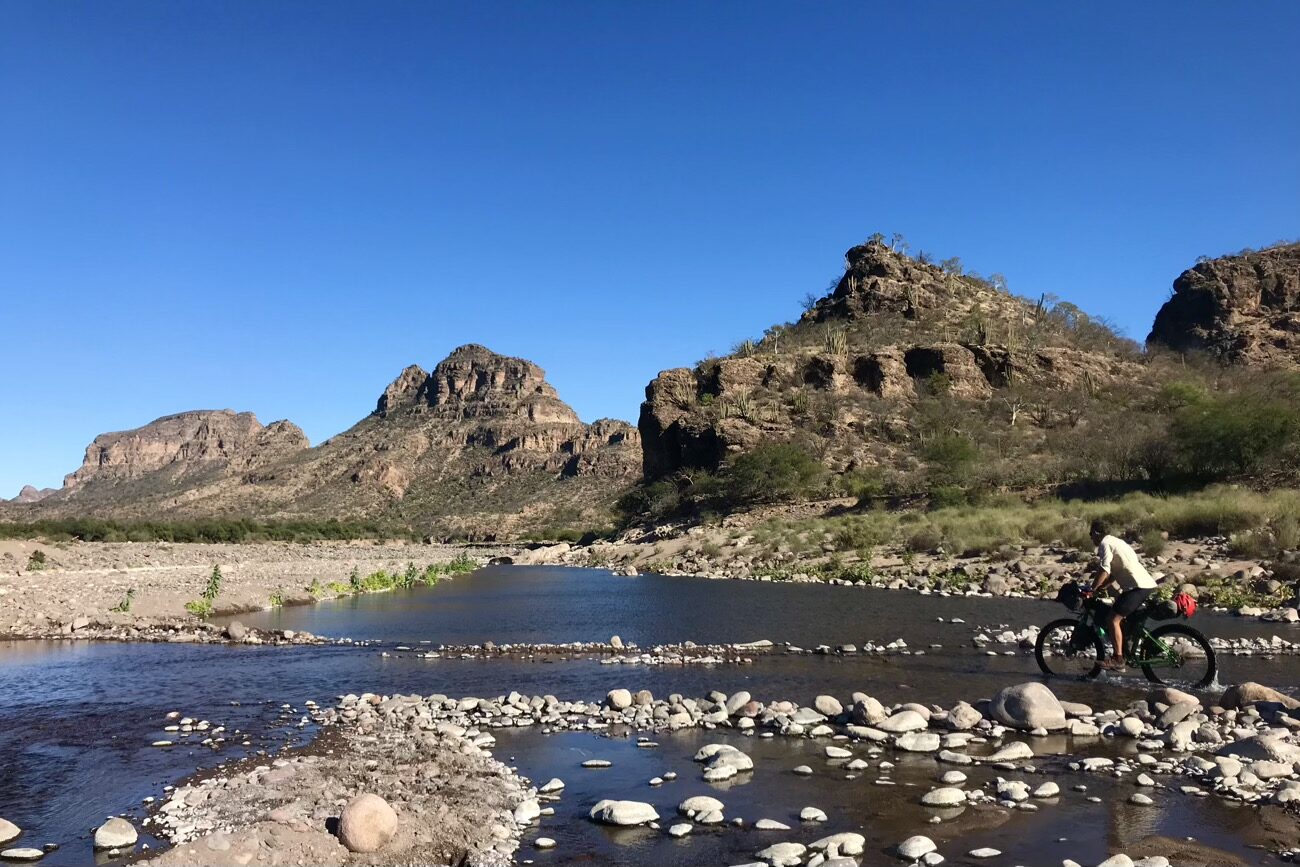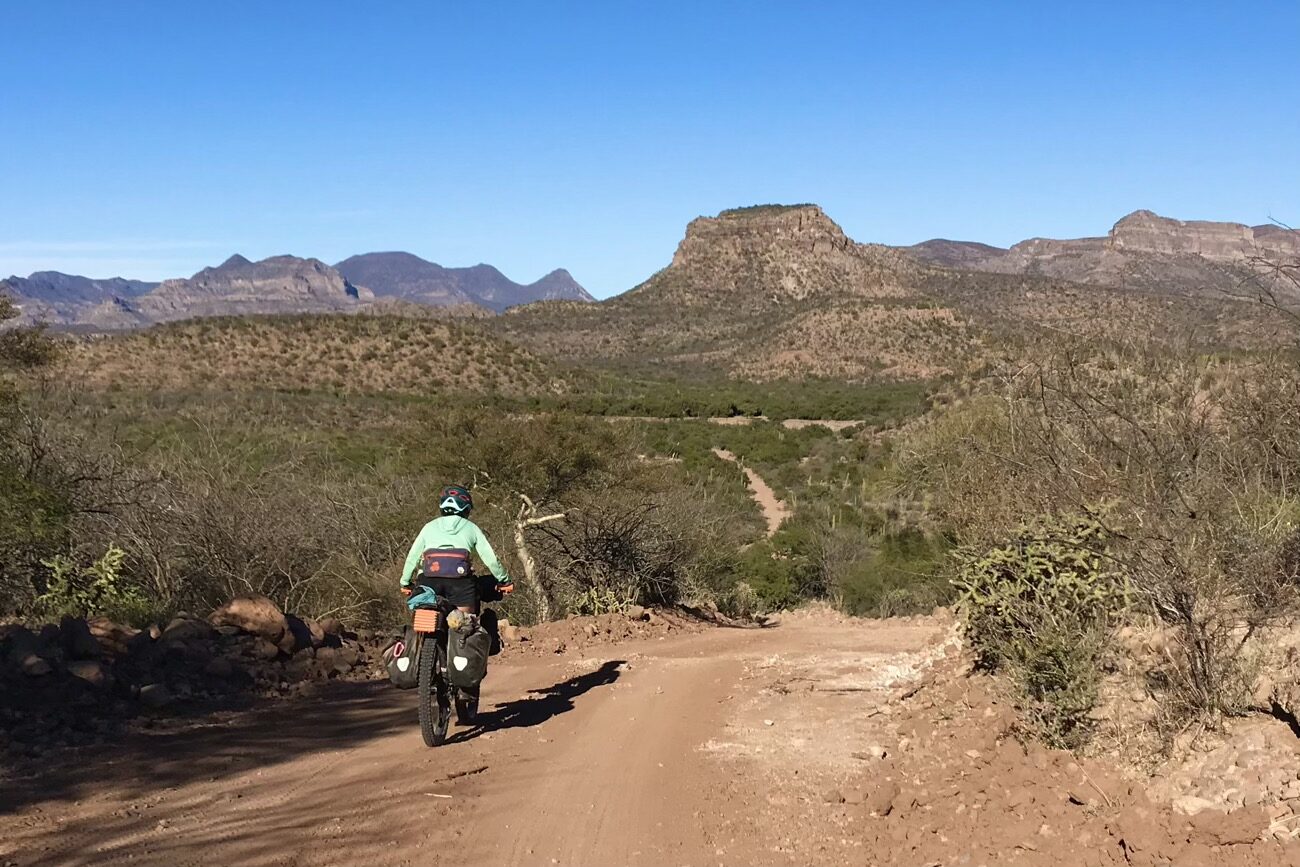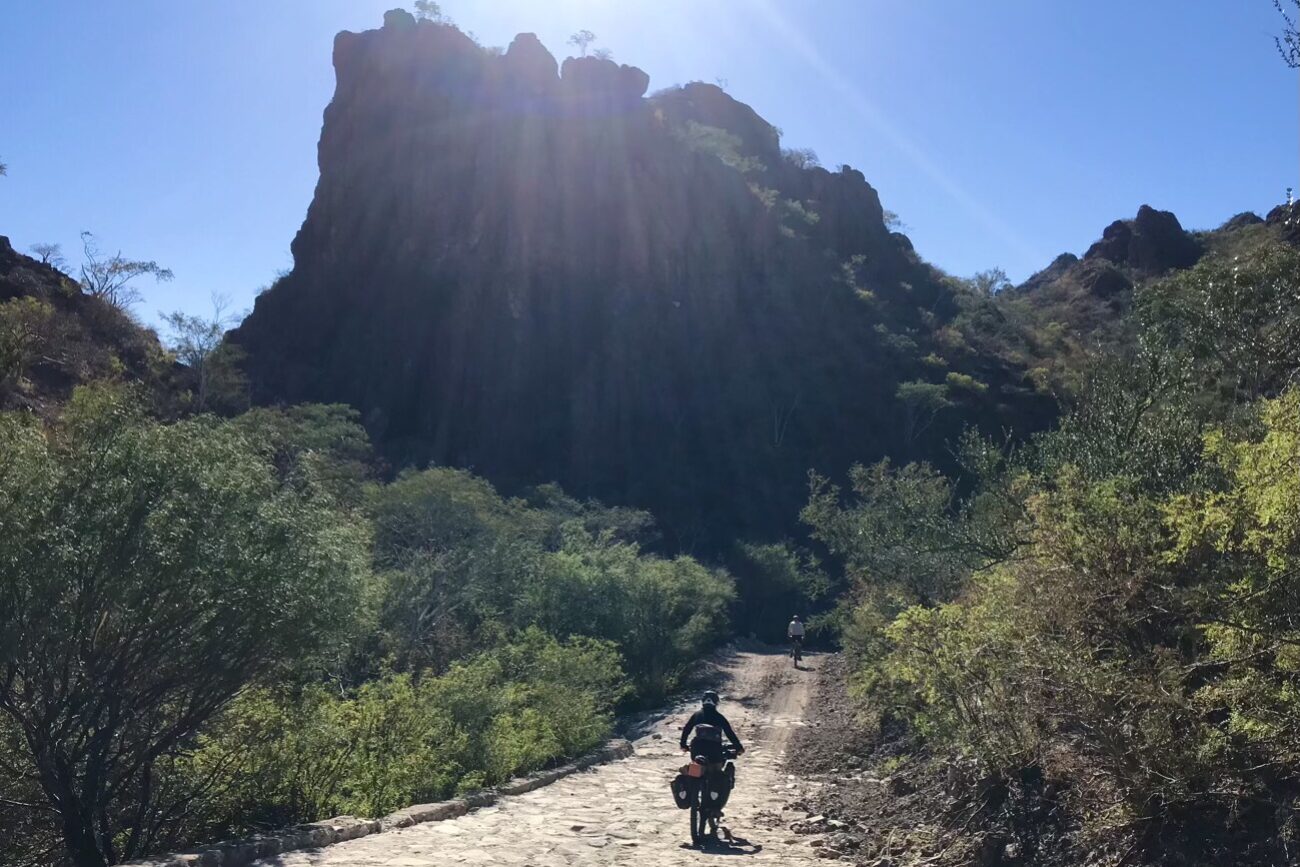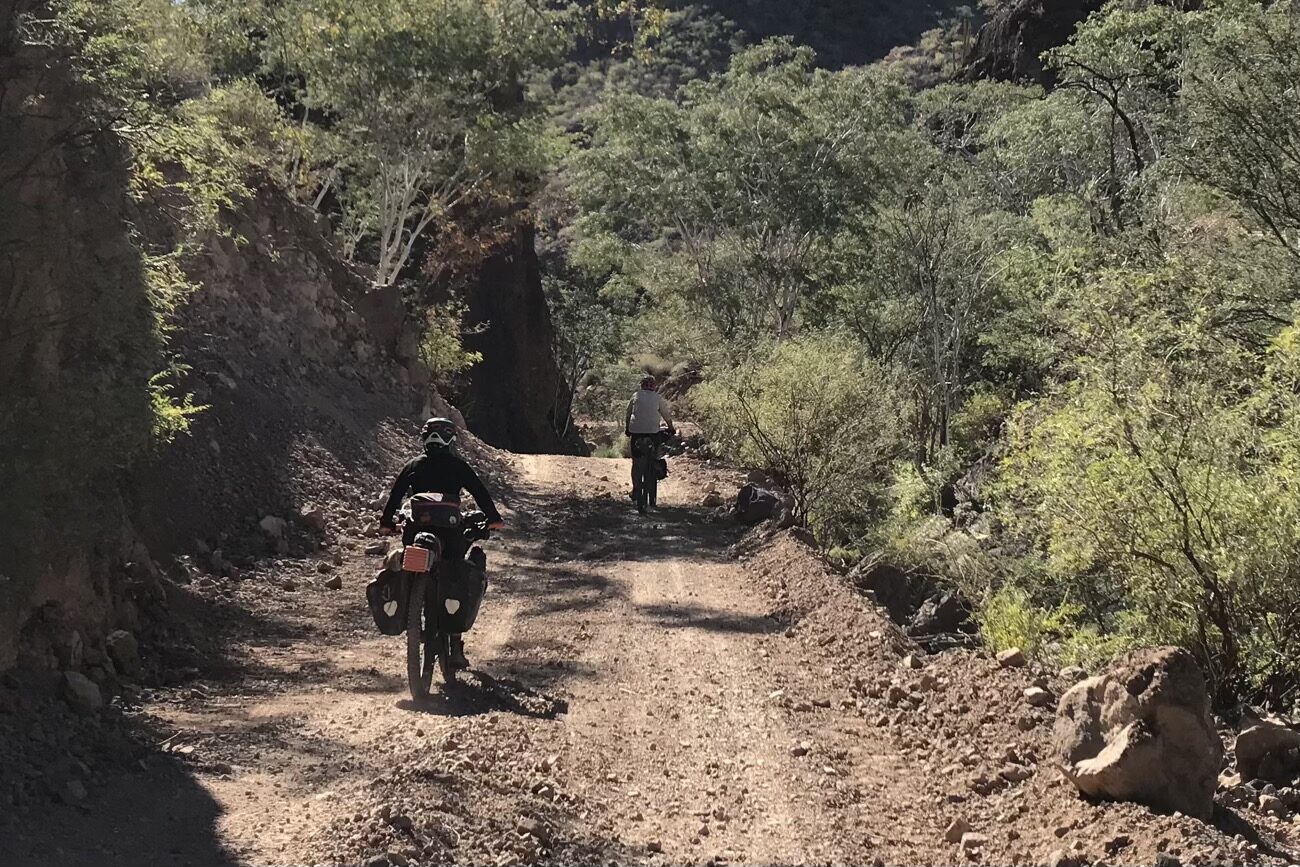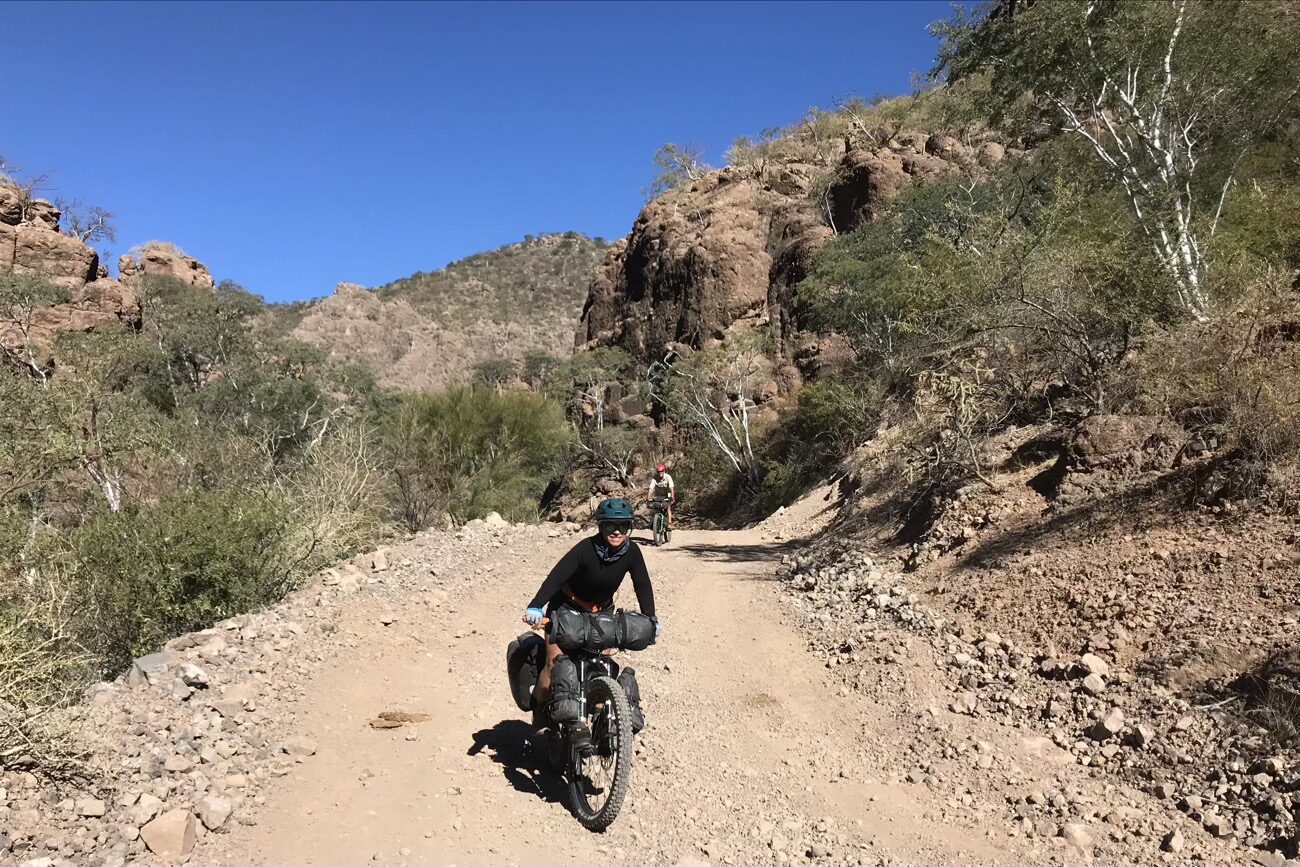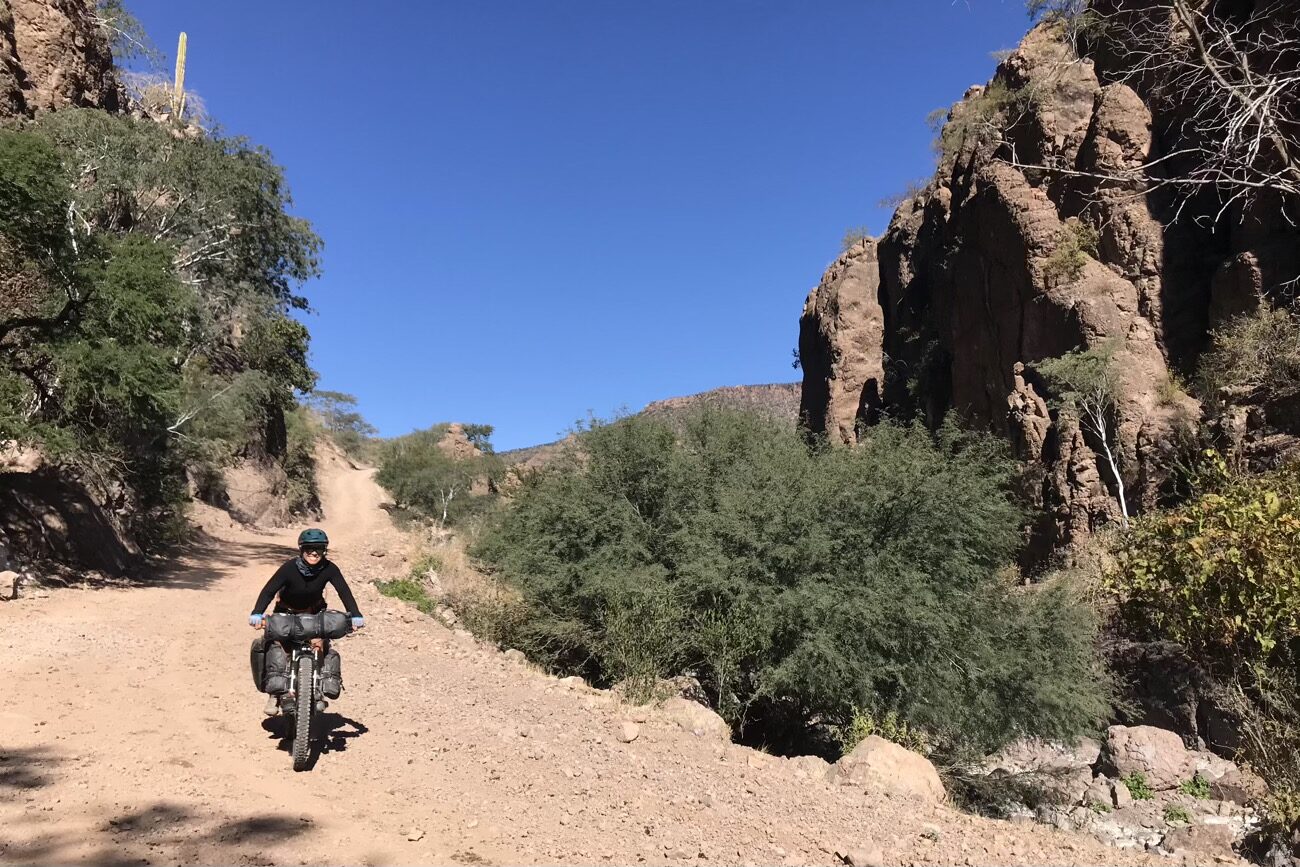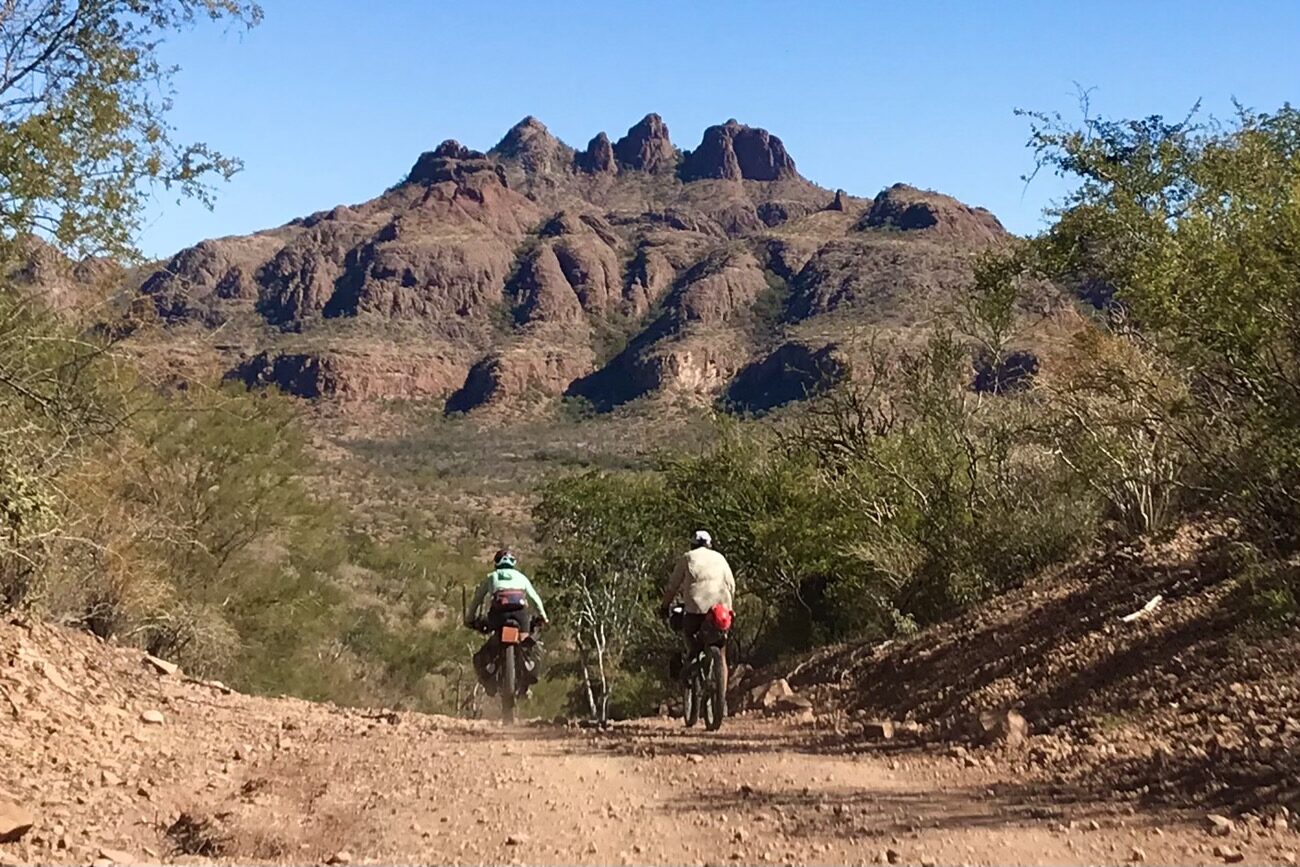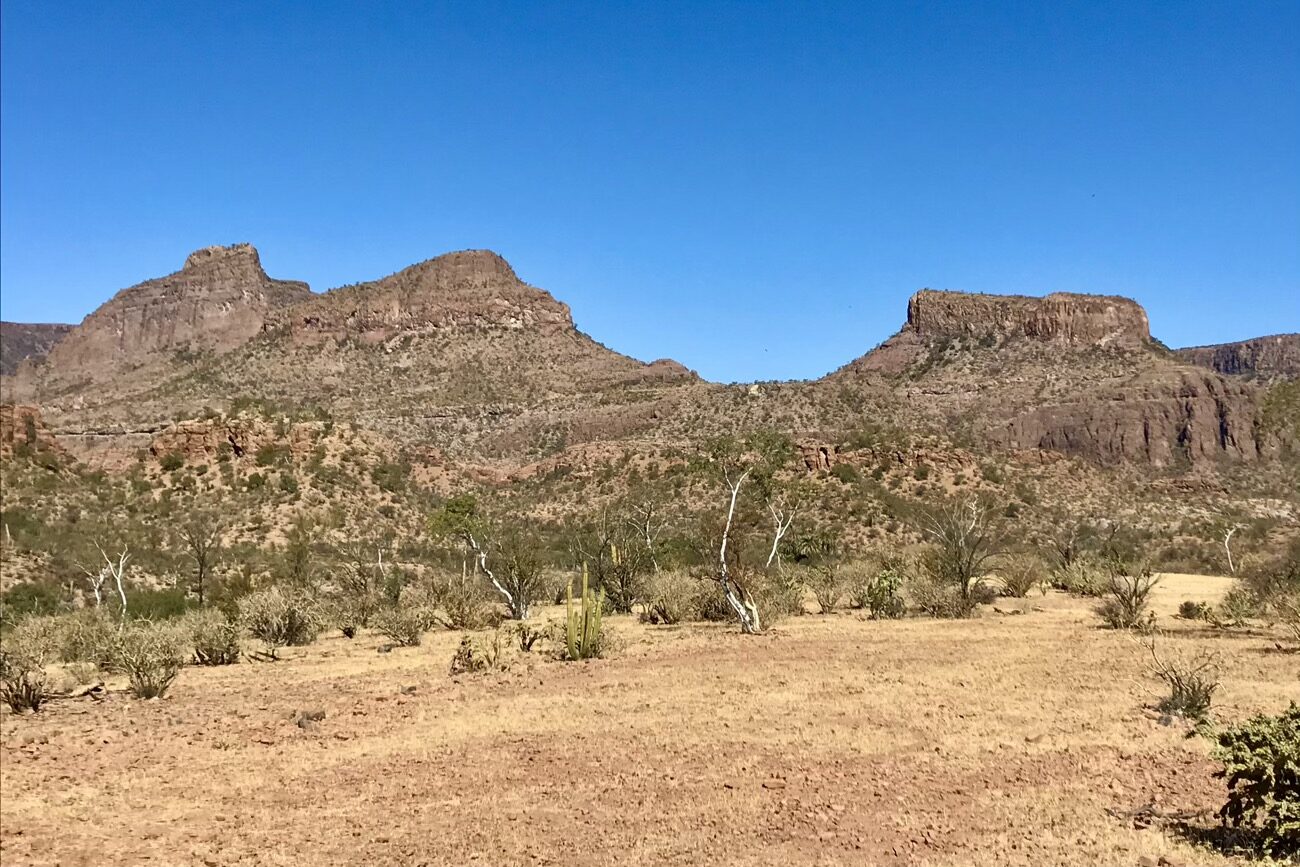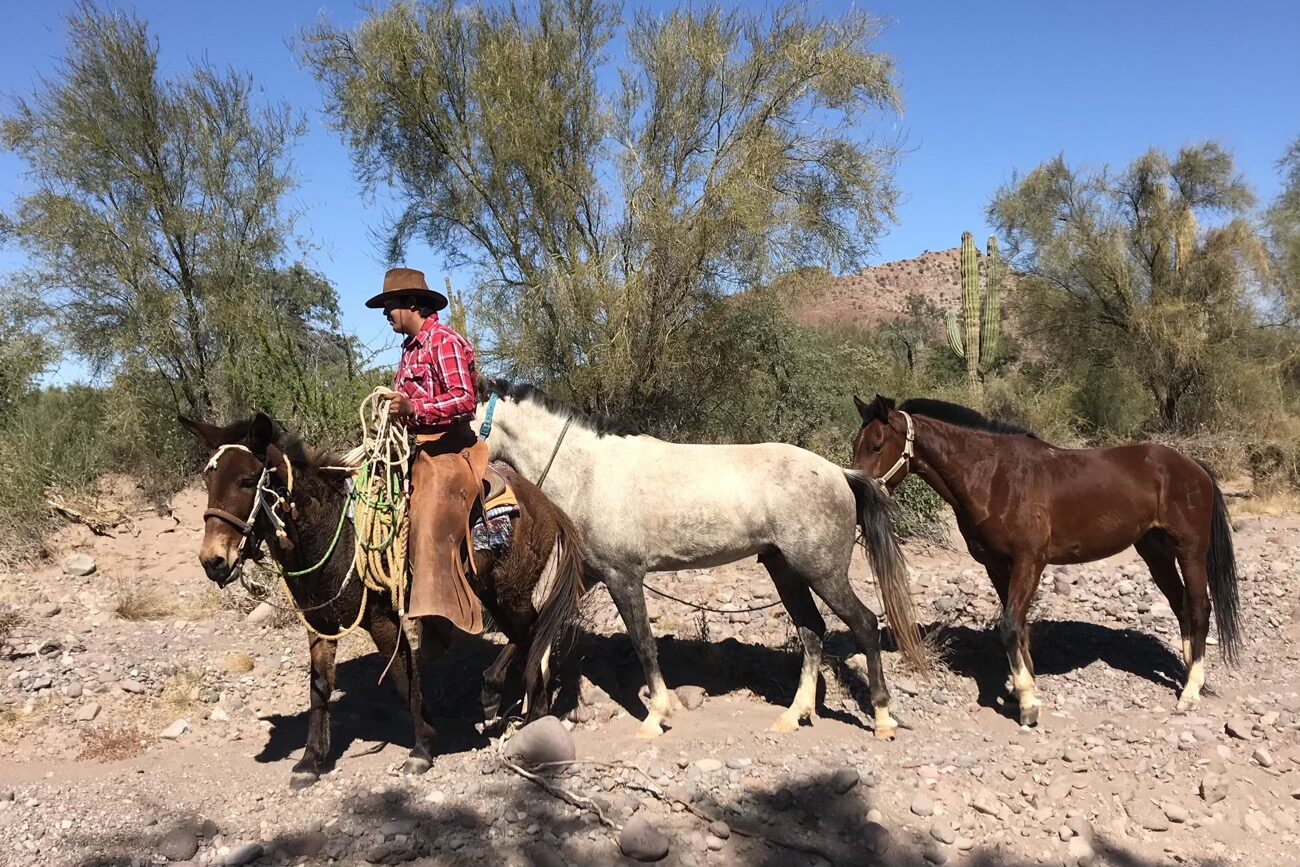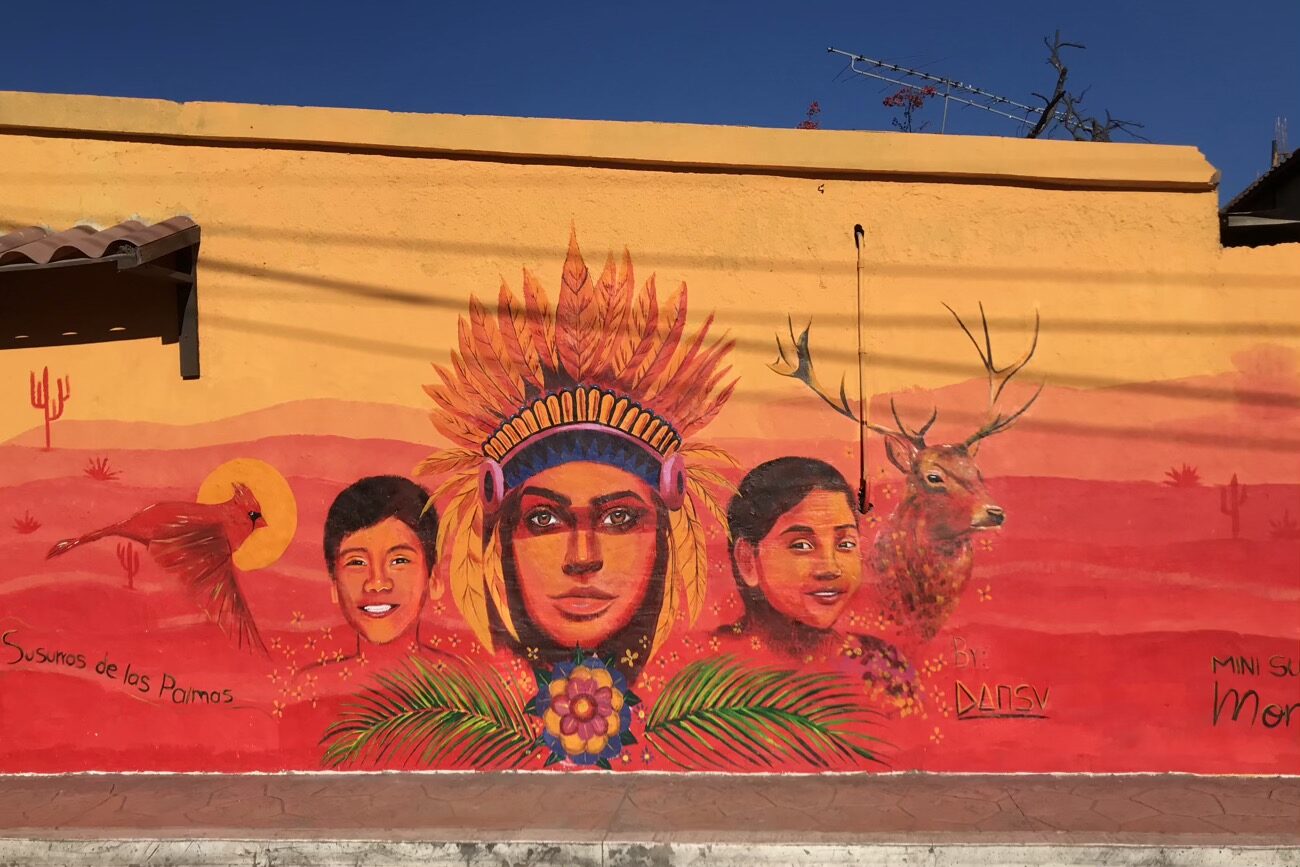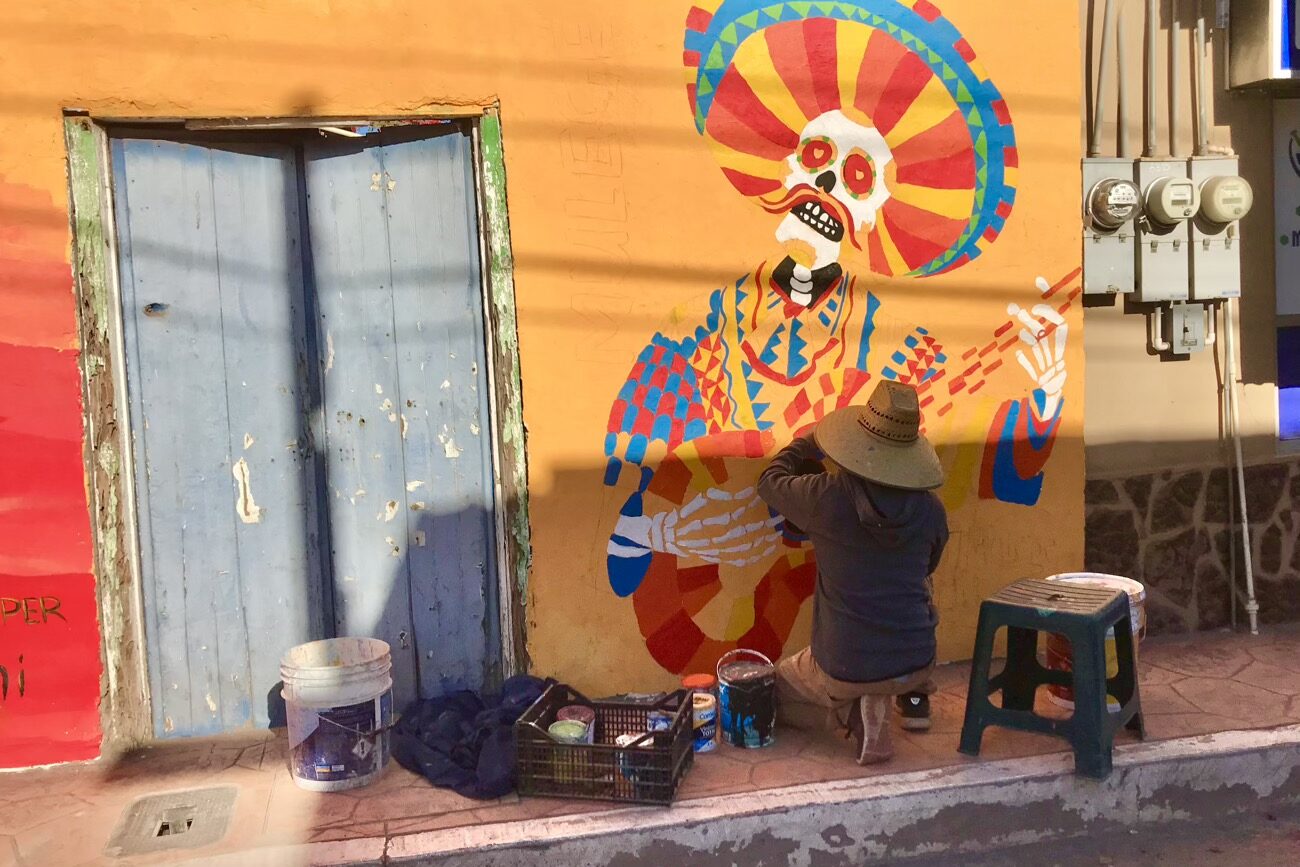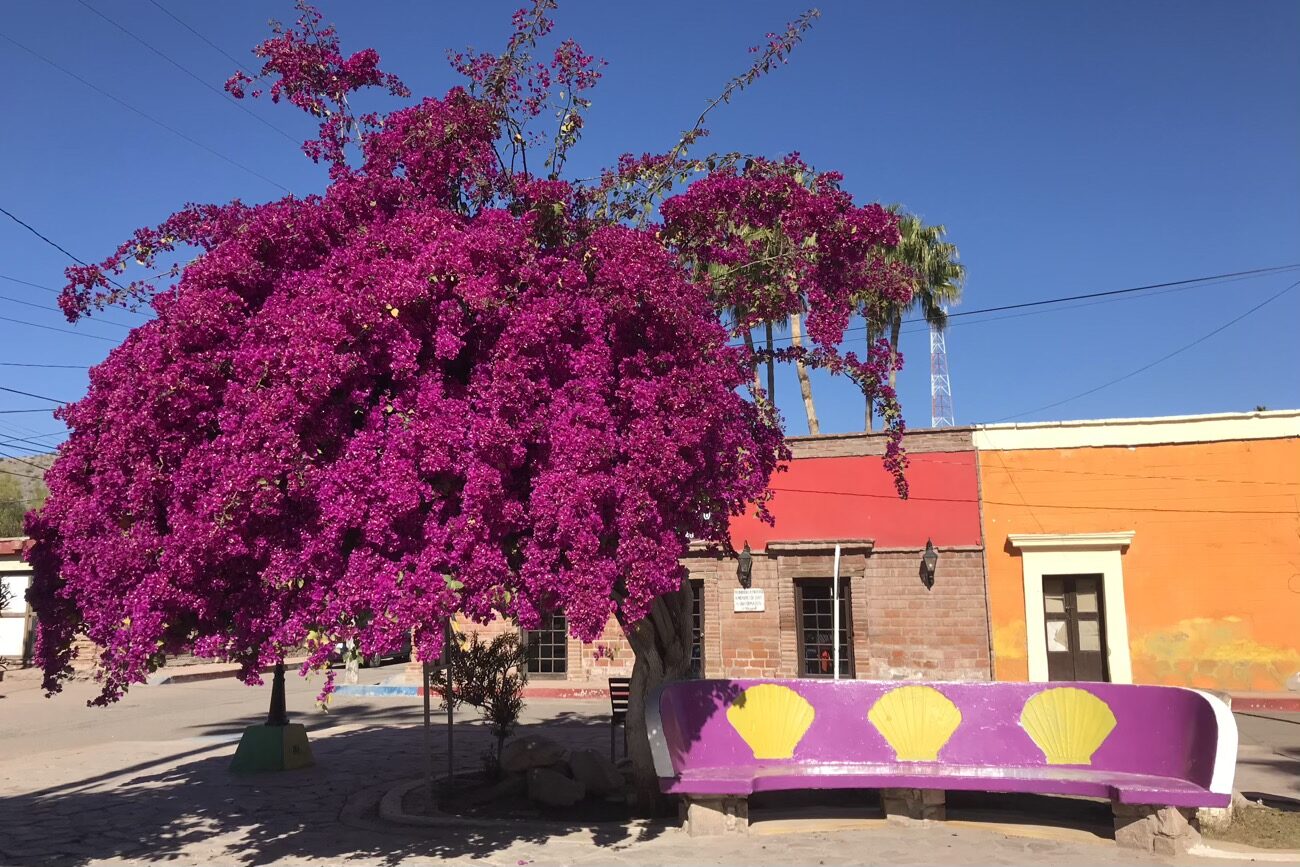Due to a rainy morning in San Ignacio we delayed our whale watching excursion to the following day. This meant we could have a relaxed departure. Along with our bike companion Bec, we left in the rain, but with a paved road most of the way to the Pacific coast it was not a hardship and by the time we got halfway to Antonio’s whale watching base on the coast the sun was out.
Bec hails from Salt Lake City and is biking the Baja solo. We first met a month ago and whilst not always riding together we have been enjoying each other’s company as our paths cross. She can out-spin us most of the time until a hill slows her up, but only because she is hauling a lot more of a load on her bike.
At Antonio’s we were able to camp and use their compostible toilets and solar heated bucket showers, as well as get meals. We were impressed with the eco-tourism operation that was not just in name.
The large San Ignacio tidal inlet is the main mating and breeding ground for the grey whale who travels 10,000km from Alaska to take advantage of the warm, high salinity water in the large tidal lagoon. It is also a safe haven from the killer whales due to the concentration of whales that inhabit the lagoon for the 3 month season. The whales mate one season, return to Alaska to feed and return to give birth the following season. When the calves are born they need to be lifted up to the surface to start breathing and the high salinity, warmer, shallower water makes it easier for the mother to do this. The calves are only a couple of weeks old at present and are sticking close to their mothers who are teaching them to breathe.
There were 5 of us on the 9am trip out into the bay along with the captain. There are restrictions on where the boats can go and how many boats can be in the whale watching zone at a time. We spent 1.5 hours in the designated area and there was plenty of action with many mother and calf pairs swimming by. It was SO amazing to experience the whales so close with their young and there were many more encounters than I was expecting. Note all trip I have wished I had upgraded my iPhone 7 before I left – for this experience even more so.
Once back on shore we rode the fast hard packed dried lakebed flats to the small fishing village of El Dátil where we had a close up encounter with a grounded, broken winged Osprey who’s claws were tangled up in nylon fishing rope. Between the 3 of us, and using a groundsheet to contain the bird, we were able to cut away the cord and free it’s claws but the badly broken wing it had sustained when it crash landed meant it didn’t survive the night. Sadly it’s mate had been flying overhead ‘crying’ when we first arrived in town.
After an amazing feed of very fresh fish tacos from the family next to the store we dossed down in their shed for the night. We paid them for the dinner, ‘bed’ and breakfast which means money, other than from fishing, is going into these small communities.
Next morning we had more fast riding on the lakebed flats till the trail turned and headed inland. At that point we chanced a upon a young family in a camper from Montana who very kindly gave us a cold Tecate beer (with lemon) and we stood chatting for quite a while – thanks Luke and Colleen!
Fifteen kilometres up the road was Rancho Girasoles, owned by Maria and Jesus. They are keen to host cyclists and offer camping and food. We were joined by young Silvan, aged 23 from Oregon who had ridden from home and was carrying on to Argentina. It was great to hang in Marias kitchen while she prepared food. Bec has good Spanish skills so it is helping my Spanish listening to her communicate and participating when I can. Maria was chuffed to find out she was only 3 months older than me.
The rough road the next day followed a deepening canyon and the heat of the day was punctuated by the numerous river crossings and cool offs. The canyon sides became more impressive the further we rode. We swam in one inviting pool and by 4pm we were happy to call it a day when we came across a great treed campsite complete with a rough table and fire pit close to our last larger river crossing. Perfecto – a place to wash in the river, a flat cactus free campsite and a good fire that kept us from going to bed too early.
After midnight the heat of the canyon has dissipated and it gets cold. The morning fire helped finish dry our footwear and keep us warm till the sun hit.
The remaining 30km up and over the pass were through stunning mesas and red walled sandstone gorges with high canyon rims as a backdrop. The initial descent had sections that had concreted cobbles because of the steepness so we had to take care and yes we did wear our helmets for a change!
Once back on the plains the final hot 20km dragged as it alternated between a jarring rocky surface and fine sand as we followed a wash (dry river valley) out to the delightful town of Mulege, an oasis town just a few kms from the Sea of Cortez and our home for the next 2 nights
